Most common cause of hcv. Hepatitis C: Causes, Transmission, and Prevention Strategies
What are the primary modes of hepatitis C transmission. How can individuals reduce their risk of contracting hepatitis C. What are the long-term health implications of chronic hepatitis C infection.
Understanding Hepatitis C: A Comprehensive Overview
Hepatitis C is a viral infection that primarily affects the liver. Caused by the hepatitis C virus (HCV), this condition can lead to serious health complications if left untreated. The virus spreads through contact with infected blood, making it a significant public health concern worldwide.
HCV infection can manifest in two forms: acute and chronic. While some individuals may clear the virus naturally within a few months (acute infection), the majority (70-85%) develop a chronic infection. This long-term infection can result in severe liver damage, including cirrhosis and liver cancer, potentially necessitating a liver transplant.
Primary Modes of Hepatitis C Transmission
Understanding how hepatitis C spreads is crucial for prevention. The virus primarily transmits through blood-to-blood contact. Here are the most common routes of transmission:

Intravenous Drug Use
Injecting drugs remains the leading cause of HCV transmission in many countries, including the UK. Sharing needles, syringes, or other drug paraphernalia contaminated with infected blood poses a significant risk. In fact, it’s estimated that nearly 90% of hepatitis C cases in the UK occur among current or former injection drug users.
Healthcare-related Transmission
Prior to widespread blood screening, many individuals contracted HCV through blood transfusions or organ transplants. While this risk has been drastically reduced in developed countries since the early 1990s, it remains a concern in regions with limited healthcare resources. Additionally, accidental needlestick injuries pose a small but present risk for healthcare workers.
Mother-to-Child Transmission
Vertical transmission, where an infected mother passes the virus to her baby during pregnancy or childbirth, occurs in approximately 5% of cases. Can breastfeeding transmit HCV? Current evidence suggests that the risk of transmission through breast milk is negligible, and breastfeeding is generally considered safe for mothers with HCV.

Sexual Transmission
While less common than other modes, sexual transmission of HCV is possible, particularly among certain high-risk groups. The risk increases in the presence of other sexually transmitted infections, HIV co-infection, or practices that may lead to blood exposure.
Less Common but Potential Routes of HCV Transmission
While the primary modes of transmission account for most HCV cases, several less common routes exist:
- Sharing personal care items (razors, toothbrushes) that may be contaminated with infected blood
- Unregulated tattooing or body piercing with non-sterile equipment
- Certain medical or dental procedures in settings with inadequate infection control measures
It’s important to note that casual contact, such as hugging, kissing, or sharing food and drinks, does not transmit HCV.
Risk Factors for Hepatitis C Infection
Certain populations face a higher risk of contracting hepatitis C. Identifying these risk factors is crucial for targeted prevention and screening efforts:

- People who inject drugs or have a history of injection drug use
- Recipients of blood transfusions or organ transplants before widespread screening (pre-1992 in many countries)
- Healthcare workers with potential exposure to contaminated blood
- Individuals born to mothers with HCV
- People with HIV infection
- Incarcerated individuals
- People who have undergone long-term hemodialysis
Prevention Strategies: Reducing the Risk of Hepatitis C Transmission
Preventing hepatitis C transmission involves a multi-faceted approach targeting various risk factors. Here are some key strategies:
Harm Reduction Programs
For individuals who inject drugs, access to clean needles and syringes through needle exchange programs can significantly reduce the risk of HCV transmission. These programs often provide education on safe injection practices and offer resources for addiction treatment.
Blood and Organ Screening
Rigorous screening of blood donations and organ transplants has dramatically reduced the risk of healthcare-associated HCV transmission in many countries. Continuing to maintain and improve these screening protocols is essential.

Infection Control in Healthcare Settings
Implementing and adhering to strict infection control measures in healthcare facilities helps prevent the spread of HCV and other bloodborne pathogens. This includes proper sterilization of medical equipment and adherence to universal precautions.
Safe Injection Practices
Beyond illicit drug use, ensuring safe injection practices in all settings, including healthcare facilities and non-medical environments (e.g., tattoo parlors), is crucial for preventing HCV transmission.
Sexual Health Precautions
While sexual transmission of HCV is relatively rare, using barrier methods like condoms can further reduce the risk, especially for individuals with multiple sexual partners or those in high-risk groups.
Long-term Health Implications of Chronic Hepatitis C
Chronic hepatitis C infection can have serious long-term health consequences if left untreated. Understanding these potential outcomes underscores the importance of prevention, early detection, and treatment:

Liver Fibrosis and Cirrhosis
Over time, chronic HCV infection can lead to scarring of the liver (fibrosis). As this scarring progresses, it can develop into cirrhosis, a severe condition that impairs liver function and increases the risk of liver failure.
Hepatocellular Carcinoma
Chronic HCV infection significantly increases the risk of developing hepatocellular carcinoma, the most common type of primary liver cancer. Regular monitoring for early detection is crucial for individuals with chronic HCV.
Extrahepatic Manifestations
HCV can affect systems beyond the liver, leading to conditions such as cryoglobulinemia (a blood vessel disorder), glomerulonephritis (kidney inflammation), and an increased risk of certain lymphomas.
Liver Transplantation
In cases of advanced liver disease or hepatocellular carcinoma, liver transplantation may become necessary. HCV-related liver disease is a leading indication for liver transplants in many countries.
Diagnosis and Screening for Hepatitis C
Early detection of HCV infection is crucial for timely treatment and prevention of transmission. The Centers for Disease Control and Prevention (CDC) recommends HCV screening for various groups:

- All adults aged 18 years and older, at least once in their lifetime
- All pregnant women during each pregnancy
- People with ongoing risk factors should be tested regularly
Diagnosis typically involves a two-step process:
- Antibody test: Detects if a person has ever been infected with HCV
- RNA test: Confirms current infection and measures viral load
Importance of Regular Testing
Why is regular testing important for individuals at ongoing risk of HCV infection? Regular testing allows for early detection and treatment, reducing the risk of liver damage and preventing further transmission. It also provides an opportunity for education on risk reduction strategies.
Treatment Options for Hepatitis C
Significant advancements in hepatitis C treatment have revolutionized the management of this infection. Modern treatments are highly effective, with cure rates exceeding 95% for most genotypes of HCV.
Direct-Acting Antivirals (DAAs)
DAAs are the current standard of care for HCV treatment. These oral medications target specific steps in the HCV life cycle, effectively suppressing viral replication. Treatment duration typically ranges from 8 to 12 weeks, with minimal side effects compared to older therapies.
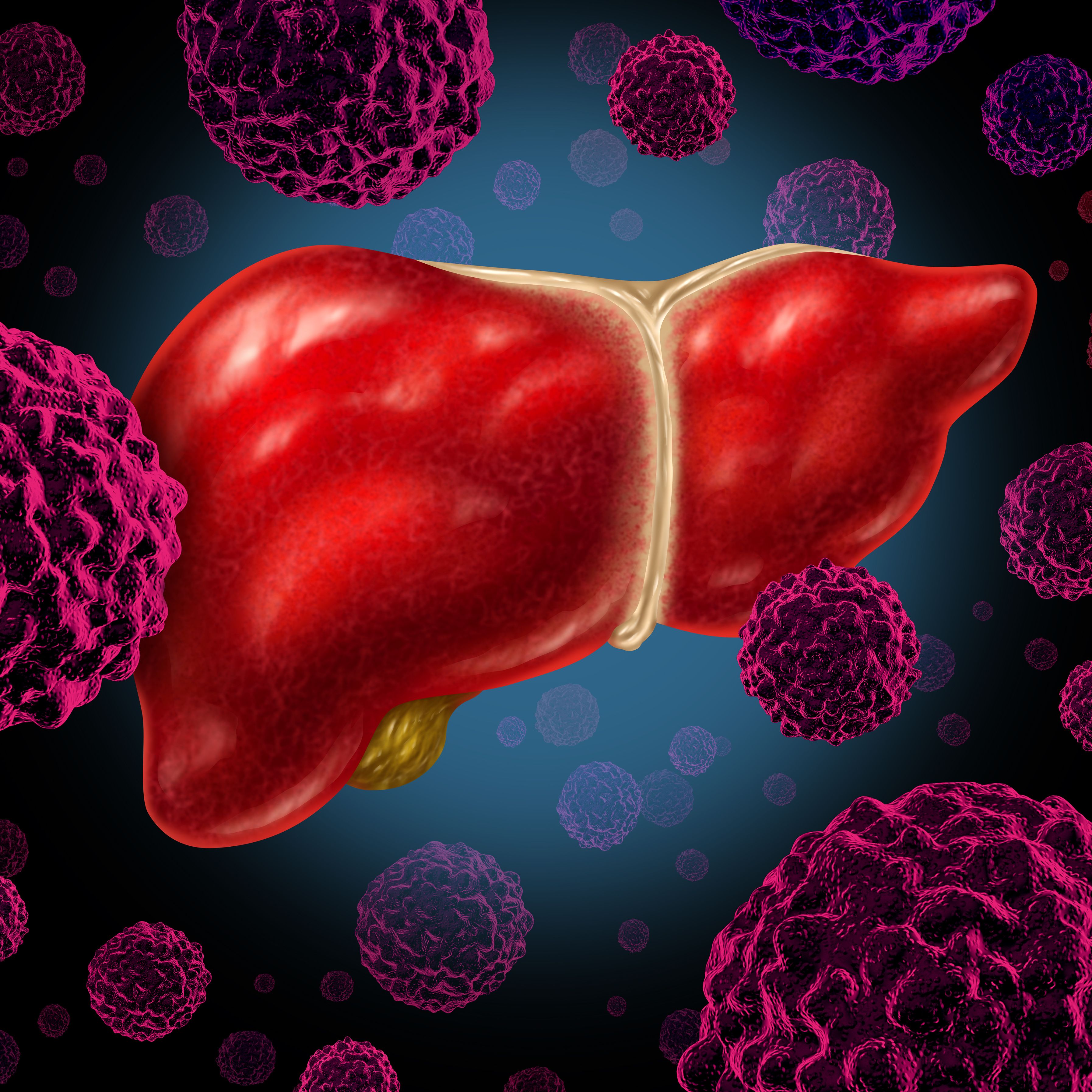
Monitoring and Follow-up
After completing treatment, patients undergo follow-up testing to confirm sustained virologic response (SVR), which indicates successful cure of the infection. Individuals with advanced liver disease may require ongoing monitoring for complications, even after achieving SVR.
Global Efforts to Eliminate Hepatitis C
The World Health Organization (WHO) has set ambitious targets for the elimination of viral hepatitis as a public health threat by 2030. This global strategy encompasses several key areas:
- Expanding access to HCV testing and treatment
- Strengthening prevention measures, including harm reduction programs
- Improving surveillance and data collection
- Addressing barriers to care, such as stigma and discrimination
Achieving these goals requires concerted efforts from governments, healthcare systems, and community organizations worldwide.
Challenges in HCV Elimination
Despite progress, several challenges remain in the global fight against hepatitis C:
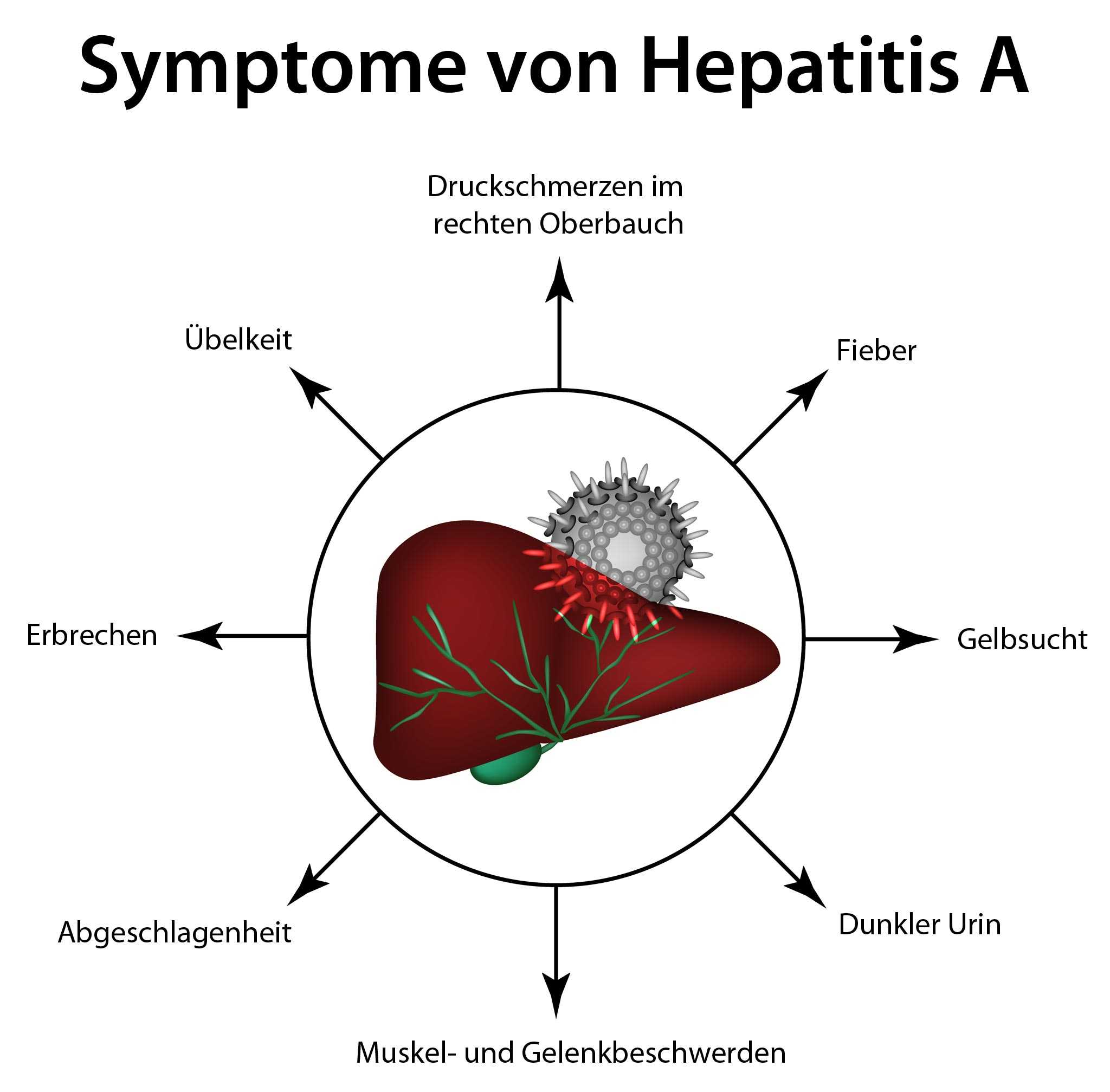
- Limited access to testing and treatment in resource-constrained settings
- High cost of DAAs in some regions
- Lack of awareness about HCV among at-risk populations
- Stigma associated with HCV infection and its risk factors
- Need for expanded harm reduction services for people who inject drugs
Addressing these challenges requires a multifaceted approach, including policy changes, increased funding for HCV programs, and efforts to combat stigma and discrimination.
Living with Hepatitis C: Support and Self-Care
For individuals living with hepatitis C, proper self-care and support are essential components of managing the condition and maintaining overall health:
Lifestyle Modifications
Certain lifestyle changes can help protect liver health and slow the progression of liver damage:
- Avoiding alcohol consumption
- Maintaining a healthy diet and exercise regimen
- Avoiding medications that may be toxic to the liver
- Getting vaccinated against hepatitis A and B
Mental Health Support
Living with a chronic condition like hepatitis C can take a toll on mental health. Access to counseling services and support groups can provide valuable emotional support and coping strategies.

Education and Empowerment
Educating individuals about their condition, treatment options, and ways to prevent transmission empowers them to take an active role in their health management and reduce the risk of spreading the virus to others.
By understanding the causes, transmission routes, and prevention strategies for hepatitis C, individuals and communities can work together to reduce the burden of this infection and move closer to the goal of global elimination. Continued research, public health efforts, and individual awareness all play crucial roles in combating this significant health challenge.
Hepatitis C – Causes – NHS
You can become infected with hepatitis C if you come into contact with the blood of an infected person.
Other bodily fluids can also contain the virus, but blood contains the highest level of it. Just a small trace of blood can cause an infection.
At room temperature, it’s thought the virus may be able survive outside the body in patches of dried blood on surfaces for up to several weeks.
The main ways you can become infected with the hepatitis C virus are described below.
Injecting drugs
People who inject drugs, including illegal recreational drugs and performance-enhancing drugs such as anabolic steroids, are at the highest risk of becoming infected with hepatitis C.
Almost 90% of hepatitis C cases in the UK occur in people who inject drugs or have injected them in the past. It’s estimated around half of the people in the UK who inject drugs have the infection.
The infection can be spread by sharing needles and associated equipment.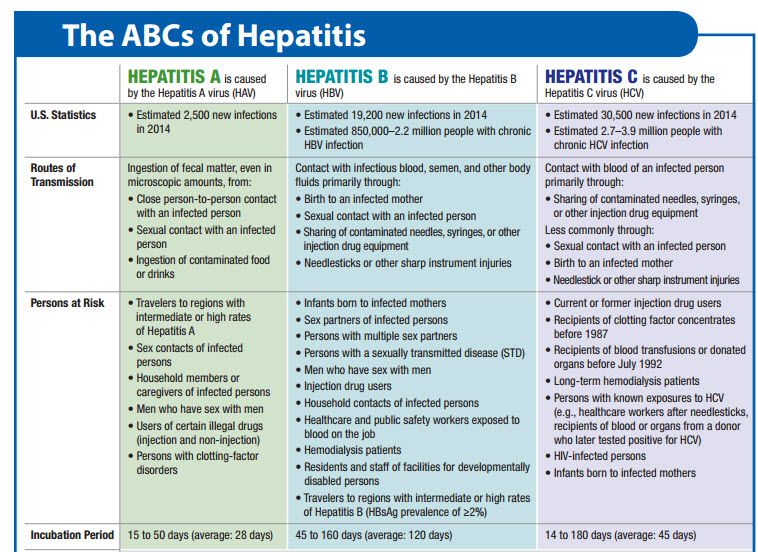 Injecting yourself with just one contaminated needle may be enough to become infected.
Injecting yourself with just one contaminated needle may be enough to become infected.
It’s also possible to get the infection by sharing other equipment used to prepare or take drugs – such as spoons, filters, pipes and straws – that have been contaminated with infected blood.
Less common causes
Unprotected sex
Hepatitis C may be transmitted during sex without using a condom (unprotected sex), although this risk is considered very low.
The risk of transmission through sex may be higher among men who have sex with men.
The risk is also increased if there are genital sores or ulcers from a sexually transmitted infection, or if either person also has HIV.
The best way to prevent transmission of hepatitis C through sex is to use a male condom or female condom.
However, as the risk is very low for couples in a long-term relationship, many choose not to use a condom.
If your partner has hepatitis C, you should be tested for the condition.
Blood donations before September 1991
Since September 1991, all blood donated in the UK is checked for the hepatitis C virus. If you received blood transfusions or blood products before this date, there’s a small chance you may have been infected with hepatitis C.
Blood transfusions and treatment abroad
If you have a blood transfusion or medical or dental treatment overseas where medical equipment is not sterilised properly, you may become infected with hepatitis C. The virus can survive in traces of blood left on equipment.
Sharing toothbrushes, scissors and razors
There’s a potential risk that hepatitis C may be passed on through sharing items such as toothbrushes, razors and scissors, as they can become contaminated with infected blood.
Equipment used by hairdressers, such as scissors and clippers, can pose a risk if it has been contaminated with infected blood and not sterilised or cleaned between customers. However, most salons operate to high standards, so this risk is low.
Tattooing and body piercing
There is a risk that hepatitis C may be passed on by using tattooing or body piercing equipment that has not been properly sterilised. However, most tattoo and body piercing parlours in the UK operate to high standards and are regulated by law, so this risk is low.
Mother to child
There is a small chance that a mother who is infected with the hepatitis C virus will pass the infection on to her baby. This happens in around 5% of cases. It’s not thought that the virus can be passed on by a mother to her baby in her breast milk.
Needlestick injury
There’s a small – approximately 1 in 30 – risk of getting hepatitis C if your skin is accidentally punctured by a needle used by someone with hepatitis C.
Healthcare workers, nurses and laboratory technicians are at increased risk because they are in regular close contact with blood and bodily fluids that may contain blood.
Hepatitis C (for Parents) – Nemours Kidshealth
What Is Hepatitis C?
Hepatitis C is an infection of the liver caused by the hepatitis C virus (HCV). HCV can lead to liver failure, liver cancer, or chronic liver disease (cirrhosis), and is a leading reason for liver transplants in the United States.
HCV can lead to liver failure, liver cancer, or chronic liver disease (cirrhosis), and is a leading reason for liver transplants in the United States.
Some people with HCV have just a short-term illness because their bodies can get rid of the virus. But most infected people (70%–85%) develop a chronic HCV infection.
How Do People Get Hepatitis C?
HCV spreads by direct contact with an infected person’s blood and other body fluids. This can happen through:
- sharing drug needles and intranasal (snorting) drug devices
- getting a tattoo or body piercing with unsterilized tools
- sexual contact (although this is less common)
- passing of the infection from a pregnant woman to her unborn child
Children who have HCV most often acquired it as newborns from their mothers.
Thanks to blood screening and other health care precautions adopted in the early 1990s, the spread of HCV from hemodialysis, blood transfusions, or organ transplants is now rare.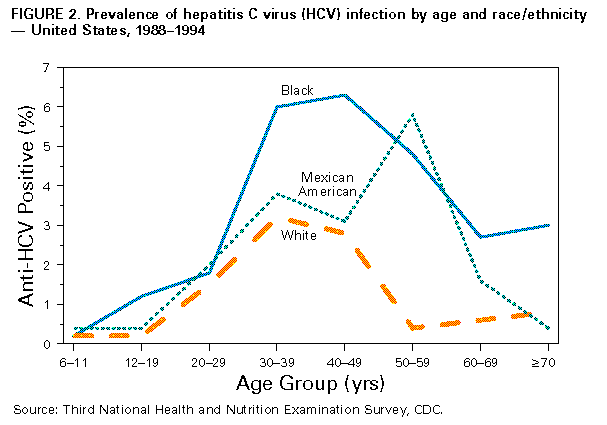
It’s also rare, but possible, for someone to get HCV by sharing household items that might contain an infected person’s blood, such as razors, toothbrushes, or scissors.
Who Is at Risk for Hepatitis C?
HCV is more common in adults than in children. Rates of HCV infection in the United States almost tripled from 2010 to 2015, according to the Centers for Disease Control and Prevention (CDC). Most of these new infections are in young people (20 to 29 years old) who inject drugs — many of whom moved from abusing prescription pain relievers (opioids) to injecting heroin, which often is cheaper and easier to get.
Because women of reproductive age are part of this group, experts worry that more newborns will be at risk for HCV.
What Is Chronic Hepatitis C?
Doctors refer to hepatitis C infections as either acute or chronic:
- An acute HCV infection is a short-term illness that clears within 6 months of when a person is exposed to the virus.

- A person who still has HCV after 6 months is said to have a chronic hepatitis C infection. This is a long-term illness, meaning the virus stays in the body and can cause lifelong illness. An estimated 3.2 million people in the U.S. have chronic HCV.
What Are the Signs & Symptoms of HCV Infection?
Hepatitis C can be a “silent but deadly” infection. Most people with HCV have no symptoms. But even without symptoms, they can develop health problems decades later and can still pass the disease to others.
When symptoms do happen (usually when the disease is very advanced), they can be similar to those of hepatitis A and hepatitis B and include:
- jaundice (when the skin and whites of the eyes look yellow)
- fever
- nausea, vomiting, and lack of appetite
- belly pain (on the upper right side)
- joint pain
- darker than usual urine (pee) or gray-colored stools
What Problems Can Hepatitis C Cause?
Hepatitis C is the most serious type of hepatitis. It’s now one of the most common reasons for liver transplants in adults. Every year, more people in the United States die from HCV than from 60 other infectious diseases — including HIV, pneumococcal pneumonia, and tuberculosis — combined.
It’s now one of the most common reasons for liver transplants in adults. Every year, more people in the United States die from HCV than from 60 other infectious diseases — including HIV, pneumococcal pneumonia, and tuberculosis — combined.
Fortunately, medicines can now treat people with hepatitis C and cure them in most cases.
p
How Is Hepatitis C Diagnosed?
Doctors do a blood test (the hepatitis C antibody test) to look for antibodies to hepatitis C. If antibodies are present, it only means that the person has had an HCV infection at some point. To see if the disease is still active, doctors do another test (RNA test) to measure the level of HCV (the viral load) in the blood.
The CDC recommends the diagnostic blood test for:
- all Americans born between 1945–1965 (baby boomers)
- anyone who has ever injected drugs
- patients who received donated blood or organs before 1992
- people receiving hemodialysis
- people who have conditions such as HIV or chronic liver disease
- newborns born to mothers with HCV
- people exposed to the blood of someone with HCV
How Is Hepatitis C Treated?
Significant progress has been made in treating and even curing hepatitis C. Older hepatitis C treatments usually required weekly injections, had serious side effects, and often were not effective.
Older hepatitis C treatments usually required weekly injections, had serious side effects, and often were not effective.
New and better oral medicines now can cure HCV for many people within 3 months. The new medicines were very expensive at first, but their prices have come down, a trend that health experts hope will continue as the incidence of HCV rises and increased screening brings more cases to light.
These medicines successfully cure about 90% of HCV patients. A new oral medicine under development looks promising for the 10% who don’t respond to the standard treatment. This new antiviral combination pill is currently under review by the U.S. Food and Drug Administration (FDA).
What Happens After a Hepatitis C Infection?
As with hepatitis B, anyone who has ever tested positive for hepatitis C cannot be a blood donor.
Health experts caution that people who had HCV associated with drug use should get counseling or further treatment to help them overcome their addiction.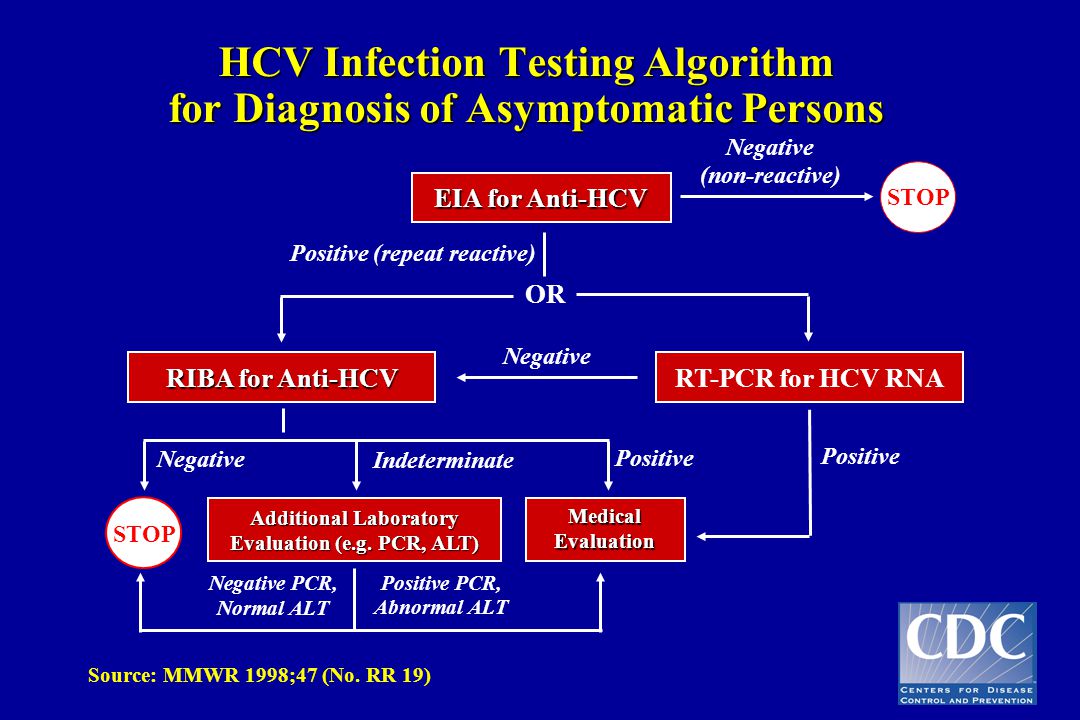 Otherwise, they could become reinfected with HCV.
Otherwise, they could become reinfected with HCV.
Can Hepatitis C Be Prevented?
Unfortunately, there’s no vaccine to protect against hepatitis C. Prevention means avoiding risky behaviors that can spread HCV, especially injecting drugs.
Liver Cancer Risk Factors
A risk factor is anything that increases
your chance of getting a disease, such as cancer. Different cancers have different risk factors. Some risk factors, like smoking, can be changed. Others, like a person’s age or family history, can’t be changed.
But having a risk factor, or even several risk factors, does not mean that you will get the disease. And some people who get the disease may have few or no known risk factors.
Factors that can increase your risk of liver cancer
Several factors can increase a person’s chance of getting a hepatocellular carcinoma (HCC).
Gender
Hepatocellular carcinoma is much more common in men than in women. Much of this is probably because of behaviors affecting some of the risk factors described below. The fibrolamellar subtype of HCC is more common in women.
Much of this is probably because of behaviors affecting some of the risk factors described below. The fibrolamellar subtype of HCC is more common in women.
Race/ethnicity
In the United States, Asian Americans and Pacific Islanders have the highest rates of liver cancer, followed by Hispanics/Latinos, American Indians/Alaska Natives, African Americans, and whites.
Chronic viral hepatitis
Worldwide, the most common risk factor for liver cancer is chronic (long-term) infection with hepatitis B virus (HBV) or hepatitis C virus (HCV). These infections lead to cirrhosis of the liver and are responsible for making liver cancer the most common cancer in many parts of the world.
In the US, infection with hepatitis C is the more common cause of HCC, while in Asia and developing countries, hepatitis B is more common. People infected with both viruses have a high risk of developing chronic hepatitis, cirrhosis, and liver cancer. The risk is even higher if they are heavy drinkers (at least 6 alcoholic drinks a day).
The risk is even higher if they are heavy drinkers (at least 6 alcoholic drinks a day).
HBV and HCV can spread from person to person through sharing contaminated needles (such as in drug use), unprotected sex, or childbirth. They can also be passed on through blood transfusions, although this is very rare in the United States since blood products are tested for these viruses. In developing countries, children sometimes contract hepatitis B infection from prolonged contact with family members who are infected.
HBV is more likely to cause symptoms, such as a flu-like illness and jaundice (a yellowing of the eyes and skin). But most people recover completely from HBV infection within a few months. Only a very small percentage of adults become chronic carriers (and have a higher risk for liver cancer). Infants and small children who become infected have a higher risk of becoming chronic carriers.
HCV, on the other hand, is less likely to cause symptoms. But most people with HCV develop chronic infections, which are more likely to lead to liver damage or even cancer.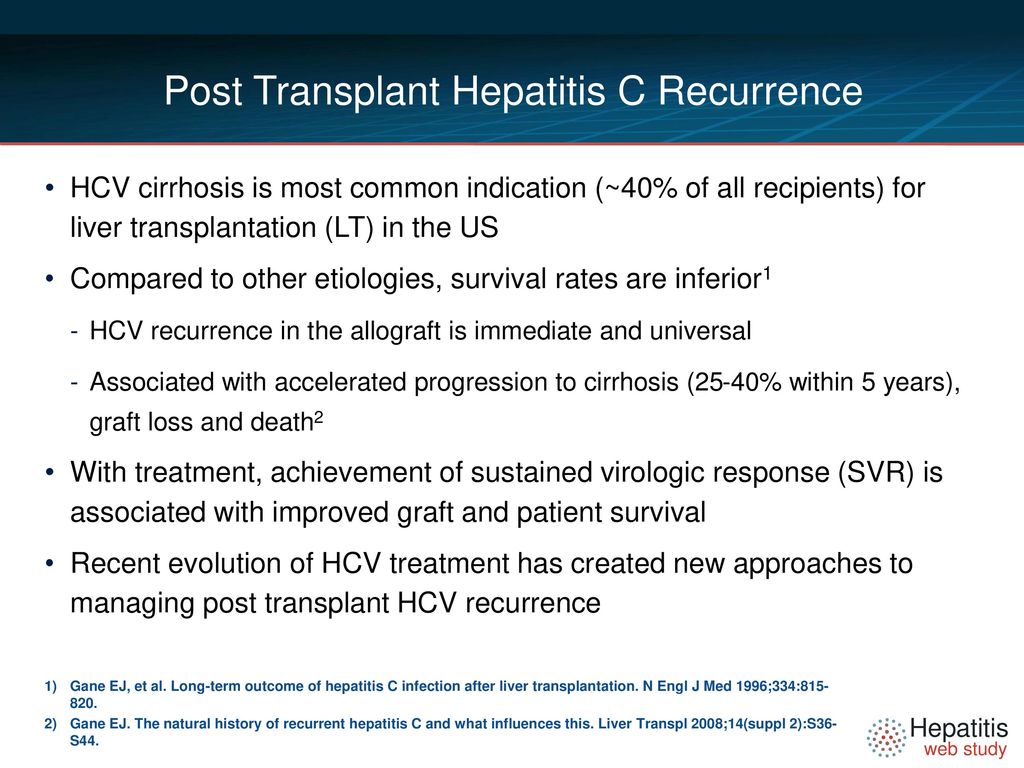
Other viruses, such as the hepatitis A virus and hepatitis E virus, can also cause hepatitis. But people infected with these viruses do not develop chronic hepatitis or cirrhosis, and do not have an increased risk of liver cancer.
Cirrhosis
Cirrhosis is a disease in which liver cells become damaged and are replaced by scar tissue. People with cirrhosis have an increased risk of liver cancer. Most (but not all) people who develop liver cancer already have some evidence of cirrhosis.
There are several possible causes of cirrhosis. Most cases in the United States occur in people who abuse alcohol or have chronic HBV or HCV infections.
Non-alcoholic fatty liver disease
Non-alcoholic fatty liver disease is a common condition in obese people. People with a subtype of this disease, known as non-alcoholic steatohepatitis (NASH), might go on to develop cirrhosis.
Primary biliary cirrhosis
Some types of autoimmune diseases that affect the liver can also cause cirrhosis. For example, in primary biliary cirrhosis (PBC) the bile ducts in the liver are damaged and even destroyed which can lead to cirrhosis. People with advanced PBC have a high risk of liver cancer.
For example, in primary biliary cirrhosis (PBC) the bile ducts in the liver are damaged and even destroyed which can lead to cirrhosis. People with advanced PBC have a high risk of liver cancer.
Inherited metabolic diseases
Certain inherited metabolic diseases can lead to cirrhosis.
People with hereditary hemochromatosis absorb too much iron from their food. The iron settles in tissues throughout the body, including the liver. If enough iron builds up in the liver, it can lead to cirrhosis and liver cancer.
Heavy alcohol use
Alcohol abuse is a leading cause of cirrhosis in the US, which in turn is linked with an increased risk of liver cancer.
Tobacco use
Smoking increases the risk of liver cancer. People who smoked and stopped have a lower risk than those who still smoke, but both groups have a higher risk than those who never smoked.
Obesity
Being obese (very overweight) increases the risk of developing liver cancer.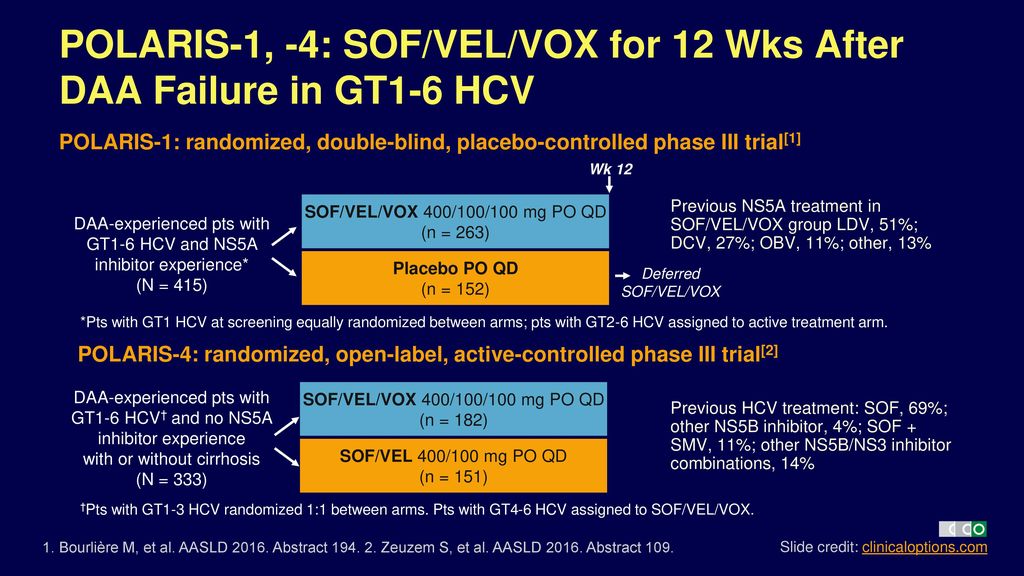 This is probably because it can result in fatty liver disease and cirrhosis.
This is probably because it can result in fatty liver disease and cirrhosis.
Type 2 diabetes
Type 2 diabetes has been linked with an increased risk of liver cancer, usually in patients who also have other risk factors such as heavy alcohol use and/or chronic viral hepatitis. This risk may also be increased because people with type 2 diabetes tend to be overweight or obese, which in turn can cause liver problems.
Certain rare diseases
Diseases that increase the risk of liver cancer include:
- Tyrosinemia
- Alpha1-antitrypsin deficiency
- Porphyria cutanea tarda
- Glycogen storage diseases
- Wilson disease
Aflatoxins
These cancer-causing substances are made by a fungus that contaminates peanuts, wheat, soybeans, ground nuts, corn, and rice. Storage in a moist, warm environment can lead to the growth of this fungus. Although this can occur almost anywhere in the world, it is more common in warmer and tropical countries. Developed countries, such as the US and those in Europe, test foods for levels of aflatoxins.
Developed countries, such as the US and those in Europe, test foods for levels of aflatoxins.
Long-term exposure to these substances is a major risk factor for liver cancer. The risk is increased even more in people with hepatitis B or C infections.
Vinyl chloride and thorium dioxide (Thorotrast)
Exposure to these chemicals raises the risk of angiosarcoma of the liver (see What is liver cancer?). It also increases the risk of developing cholangiocarcinoma and hepatocellular cancer, but to a far lesser degree. Vinyl chloride is a chemical used in making some kinds of plastics. Thorotrast is a chemical that in the past was injected into some patients as part of certain x-ray tests. When the cancer-causing properties of these chemicals were recognized, steps were taken to eliminate them or minimize exposure to them. Thorotrast is no longer used, and exposure of workers to vinyl chloride is strictly regulated.
Anabolic steroids
Anabolic steroids are male hormones used by some athletes to increase their strength and muscle mass.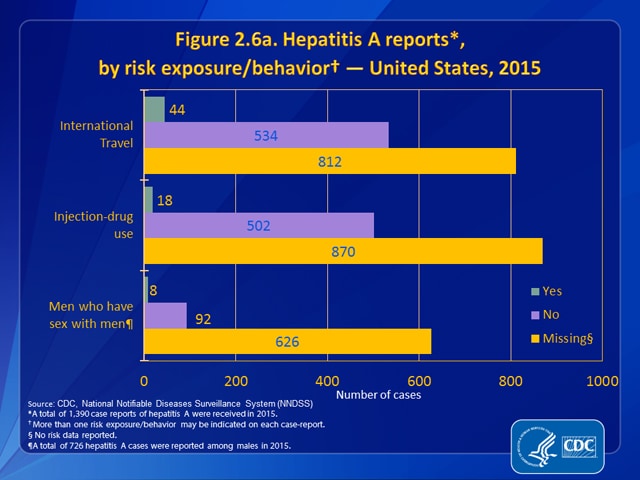 Long-term anabolic steroid use can slightly increase the risk of hepatocellular cancer. Cortisone-like steroids, such as hydrocortisone, prednisone, and dexamethasone, do not carry this same risk.
Long-term anabolic steroid use can slightly increase the risk of hepatocellular cancer. Cortisone-like steroids, such as hydrocortisone, prednisone, and dexamethasone, do not carry this same risk.
Factors that may lower your risk of liver cancer
Hepatitis B vaccine
Since chronic hepatitis B infection can lead to cirrhosis and then liver cancer, getting vaccinated against the hepatitis B virus may protect people from liver cancer caused by the hepatitis B virus.
Treatment of viral hepatitis
It is known that chronic infections with hepatitis B or even hepatitis C can lead to cirrhosis and liver cancer. Getting treatment for either infection can lower one’s risk of liver cancer.
Factors with unclear effects on liver cancer risk
Aspirin
Aspirin has been shown to reduce the risk of a few cancers. Some studies have shown a reduced risk of liver cancer with regular use of aspirin, but more research is needed.
Hepatitis C | Alabama Department of Public Health (ADPH)
Hepatitis C is a liver disease that results from infection with the Hepatitis C virus. It can range in severity from a mild illness lasting a few weeks to a serious, lifelong illness. Hepatitis C is usually spread when blood from a person infected with the hepatitis C virus enters the body of someone who is not infected. Today, most people become infected with the hepatitis C virus by sharing needles or other equipment to inject drugs. Before 1992, when widespread screening of the blood supply began in the United States, hepatitis C was also commonly spread through blood transfusions and organ transplants.
Hepatitis C can be either “acute” or “chronic.” Acute hepatitis C virus infection is a short-term illness that occurs within the first six months after someone is exposed to the hepatitis C virus. For most people, acute infection leads to chronic infection. Chronic hepatitis C is a serious disease than can result in long-term health problems, or even death.
There is no vaccine for hepatitis C. The best way to prevent hepatitis C is by avoiding behaviors that can spread the disease, especially injection drug use. Watch Hepatitis C: Did You Know? for more information.
Frequently Asked Questions
Statistics
How common is chronic hepatitis C in the United States?
An estimated 3.2 million persons in the United States have chronic hepatitis C virus infection. Most people do not know they are infected because they don’t look or feel sick. In 2013, hepatitis C-related mortality surpassed the total combined number of deaths from 60 other infectious diseases reported to CDC, including HIV, pneumococcal disease, and tuberculosis.
How likely is it that acute hepatitis C will become chronic?
Approximately 75%–85% of people who become infected with hepatitis C virus develop chronic infection.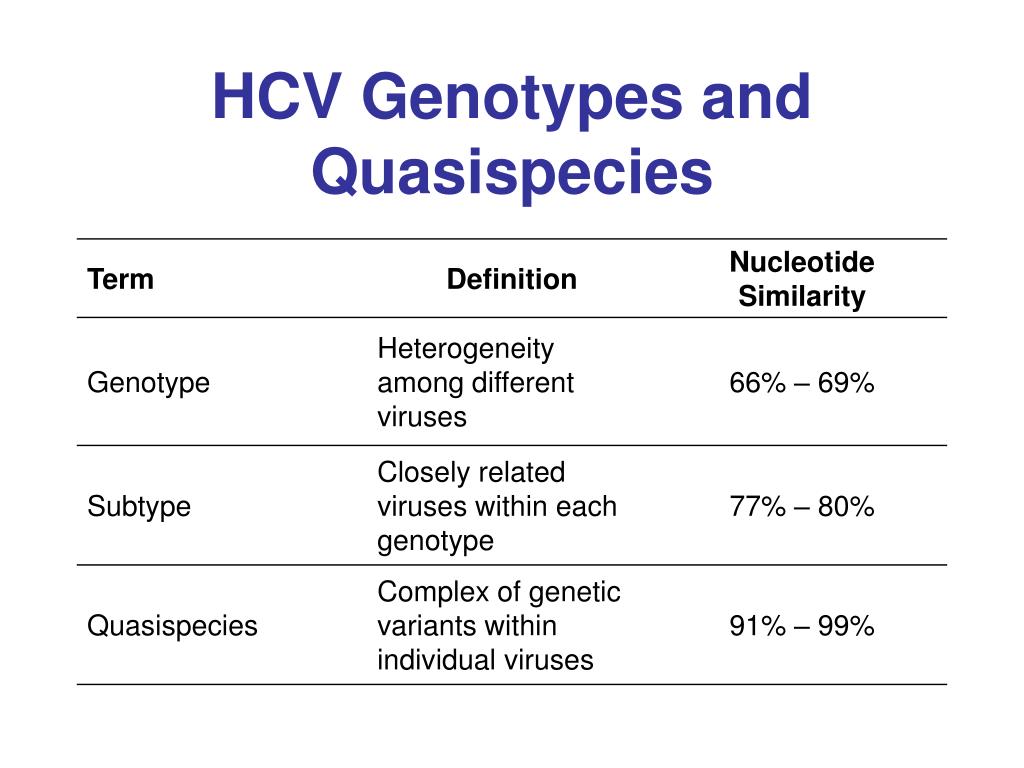
back to top
Transmission/Exposure
How is hepatitis C spread?
Hepatitis C is usually spread when blood from a person infected with the hepatitis C virus enters the body of someone who is not infected. Today, most people become infected with the hepatitis C virus by sharing needles or other equipment to inject drugs. Before 1992, when widespread screening of the blood supply began in the United States, hepatitis C was also commonly spread through blood transfusions and organ transplants.
People can become infected with the hepatitis C virus during such activities as:
- Sharing needles, syringes, or other equipment to inject drugs
- Needlestick injuries in health care settings
- Being born to a mother who has hepatitis C
Less commonly, a person can also get hepatitis C virus infection through:
- Sharing personal care items that may have come in contact with another person’s blood, such as razors or toothbrushes
- Having sexual contact with a person infected with the hepatitis C virus
Can hepatitis C be spread through sexual contact?
Yes, but the risk of transmission from sexual contact is believed to be low. The risk increases for those who have multiple sex partners, have a sexually transmitted disease, engage in rough sex, or are infected with HIV. More research is needed to better understand how and when hepatitis C can be spread through sexual contact.
The risk increases for those who have multiple sex partners, have a sexually transmitted disease, engage in rough sex, or are infected with HIV. More research is needed to better understand how and when hepatitis C can be spread through sexual contact.
Can you get hepatitis C by getting a tattoo or piercing?
A few major research studies have not shown hepatitis C to be spread through licensed, commercial tattooing facilities. However, transmission of hepatitis C (and other infectious diseases) is possible when poor infection-control practices are used during tattooing or piercing. Body art is becoming increasingly popular in the United States, and unregulated tattooing and piercing are known to occur in prisons and other informal or unregulated settings. Further research is needed to determine if these types of settings and exposures are responsible for hepatitis C virus transmission.
Can hepatitis C be spread within a household?
Yes, but this does not occur very often.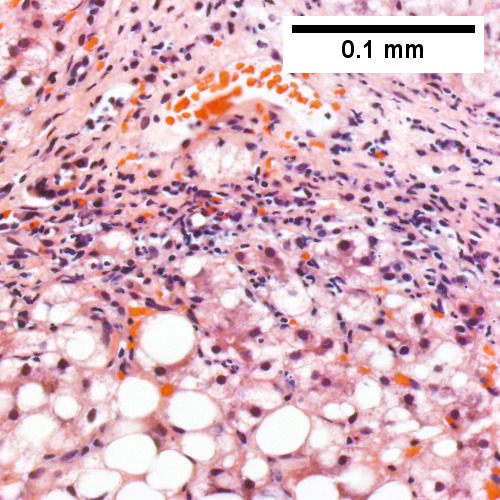 If hepatitis C virus is spread within a household, it is most likely a result of direct, through-the-skin exposure to the blood of an infected household member.
If hepatitis C virus is spread within a household, it is most likely a result of direct, through-the-skin exposure to the blood of an infected household member.
How should blood spills be cleaned from surfaces to make sure that hepatitis C virus is gone?
Any blood spills — including dried blood, which can still be infectious — should be cleaned using a dilution of one part household bleach to 10 parts water. Gloves should be worn when cleaning up blood spills.
What are ways hepatitis C is not spread?
Hepatitis C virus is not spread by sharing eating utensils, breastfeeding, hugging, kissing, holding hands, coughing, or sneezing. It is also not spread through food or water.
Who is at risk for hepatitis C?
Some people are at increased risk for hepatitis C, including:
- Current injection drug users (currently the most common way hepatitis C virus is spread in the United States)
- Past injection drug users, including those who injected only one time or many years ago
- Recipients of donated blood, blood products, and organs (once a common means of transmission but now rare in the United States since blood screening became available in 1992)
- People who received a blood product for clotting problems made before 1987
- Hemodialysis patients or persons who spent many years on dialysis for kidney failure
- People who received body piercing or tattoos done with non-sterile instruments
- People with known exposures to the hepatitis C virus, such as
- Health care workers injured by needlesticks
- Recipients of blood or organs from a donor who tested positive for the hepatitis C virus
- HIV-infected persons
- Children born to mothers infected with the hepatitis C virus
Less common risks include:
- Having sexual contact with a person who is infected with the hepatitis C virus
- Sharing personal care items, such as razors or toothbrushes, that may have come in contact with the blood of an infected person
What is the risk of a pregnant woman passing hepatitis C to her baby?
Hepatitis C is rarely passed from a pregnant woman to her baby. About 4 of every 100 infants born to mothers with hepatitis C become infected with the virus. However, the risk becomes greater if the mother has both HIV infection and hepatitis C.
About 4 of every 100 infants born to mothers with hepatitis C become infected with the virus. However, the risk becomes greater if the mother has both HIV infection and hepatitis C.
Can a person get hepatitis C from a mosquito or other insect bite?
Hepatitis C virus has not been shown to be transmitted by mosquitoes or other insects.
Can I donate blood, organs, or semen if I have hepatitis C?
No, if you ever tested positive for the hepatitis C virus (or hepatitis B virus), experts recommend never donating blood, organs, or semen because this can spread the infection to the recipient.
back to top
Symptoms
What are the symptoms of acute hepatitis C?
Approximately 70%–80% of people with acute hepatitis C do not have any symptoms. Some people, however, can have mild to severe symptoms soon after being infected, including:
- Fever
- Fatigue
- Loss of appetite
- Nausea
- Vomiting
- Abdominal pain
- Dark urine
- Clay-colored bowel movements
- Joint pain
- Jaundice (yellow color in the skin or eyes)
How soon after exposure to hepatitis C do symptoms appear?
If symptoms occur, the average time is 6–7 weeks after exposure, but this can range from 2 weeks to 6 months. However, many people infected with the hepatitis C virus do not develop symptoms.
However, many people infected with the hepatitis C virus do not develop symptoms.
Can a person spread hepatitis C without having symptoms?
Yes, even if a person with hepatitis C has no symptoms, he or she can still spread the virus to others.
Is it possible to have hepatitis C and not know it?
Yes, many people who are infected with the hepatitis C virus do not know they are infected because they do not look or feel sick.
What are the symptoms of chronic hepatitis C?
Most people with chronic hepatitis C do not have any symptoms. However, if a person has been infected for many years, his or her liver may be damaged. In many cases, there are no symptoms of the disease until liver problems have developed. In persons without symptoms, hepatitis C is often detected during routine blood tests to measure liver function and liver enzyme (protein produced by the liver) level.
How serious is chronic hepatitis C?
Chronic hepatitis C is a serious disease that can result in long-term health problems, including liver damage, liver failure, liver cancer, or even death.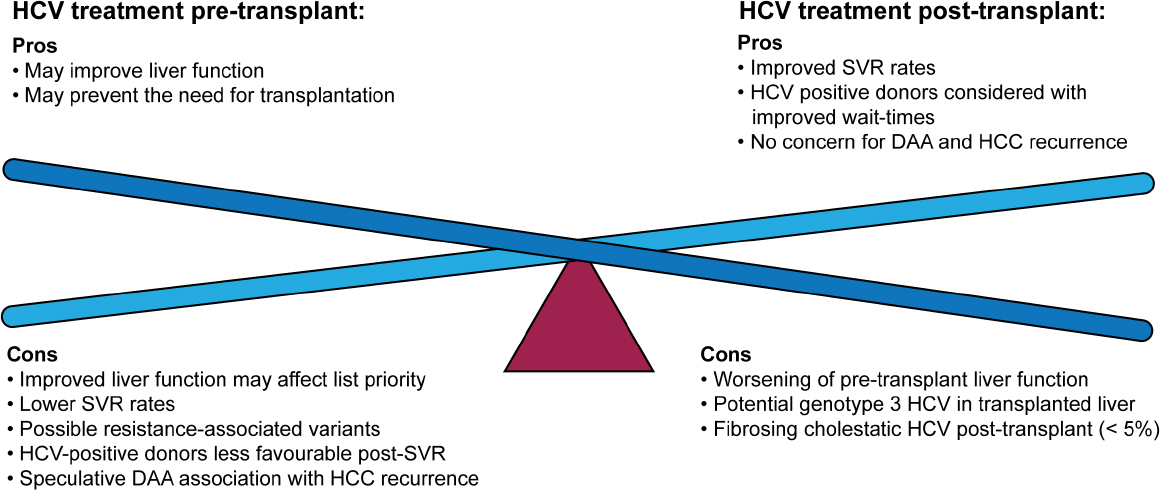 It is the leading cause of cirrhosis and liver cancer and the most common reason for liver transplantation in the United States.
It is the leading cause of cirrhosis and liver cancer and the most common reason for liver transplantation in the United States.
What are the long-term effects of hepatitis C?
Of every 100 people infected with the hepatitis C virus, about:
- 75–85 people will develop chronic hepatitis C virus infection; of those,
- 60–70 people will go on to develop chronic liver disease;
- 5–20 people will go on to develop cirrhosis over a period of 20–30 years; and
- 1–5 people will die from cirrhosis or liver cancer.
back to top
Tests
Can a person have normal liver enzyme (e.g., ALT) results and still have hepatitis C?
Yes. It is common for persons with chronic hepatitis C to have a liver enzyme level that goes up and down, with periodic returns to normal or near normal. Some infected persons have liver enzyme levels that are normal for over a year even though they have chronic liver disease. If the liver enzyme level is normal, persons should have their enzyme level re-checked several times over a 6–12 month period. If the liver enzyme level remains normal, the doctor may check it less frequently, such as once a year.
Some infected persons have liver enzyme levels that are normal for over a year even though they have chronic liver disease. If the liver enzyme level is normal, persons should have their enzyme level re-checked several times over a 6–12 month period. If the liver enzyme level remains normal, the doctor may check it less frequently, such as once a year.
Who should get tested for hepatitis C?
Talk to your doctor about being tested for hepatitis C if any of the following are true:
- You were born from 1945 through 1965.
- You are a current or former injection drug user, even if you injected only one time or many years ago.
- You were treated for a blood clotting problem before 1987.
- You received a blood transfusion or organ transplant before July 1992.
- You are on long-term hemodialysis treatment.
- You have abnormal liver tests or liver disease.
- You work in health care or public safety and were exposed to blood through a needlestick or other sharp object injury.

- You are infected with HIV.
If you are pregnant, should you be tested for hepatitis C?
No, getting tested for hepatitis C is not part of routine prenatal care. However, if a pregnant woman has risk factors for hepatitis C virus infection, she should speak with her doctor about getting tested.
What blood tests are used to test for hepatitis C?
Several different blood tests are used to test for hepatitis C. A doctor may order just one or a combination of these tests. Typically, a person will first get a screening test that will show whether he or she has developed antibodies to the hepatitis C virus. (An antibody is a substance found in the blood that the body produces in response to a virus.) Having a positive antibody test means that a person was exposed to the virus at some time in his or her life. If the antibody test is positive, a doctor will most likely order a second test to confirm whether the virus is still present in the person’s bloodstream.
back to top
Treatment
How is chronic hepatitis C treated?
Each person should discuss treatment options with a doctor who specializes in treating hepatitis. This can include some internists, family practitioners, infectious disease doctors, or hepatologists (liver specialists). People with chronic hepatitis C should be monitored regularly for signs of liver disease and evaluated for treatment. The treatment most often used for hepatitis C is direct acting antiviral treatments.
Is it possible to get over hepatitis C?
Yes, approximately 15%–25% of people who get hepatitis C will clear the virus from their bodies without treatment and will not develop chronic infection. Experts do not fully understand why this happens for some people.
What can a person with chronic hepatitis C do to take care of his or her liver?
People with chronic hepatitis C should be monitored regularly by an experienced doctor. They should avoid alcohol because it can cause additional liver damage. They also should check with a health professional before taking any prescription pills, supplements, or over-the-counter medications, as these can potentially damage the liver. If liver damage is present, a person should check with his or her doctor about getting vaccinated against hepatitis A and hepatitis B.
They also should check with a health professional before taking any prescription pills, supplements, or over-the-counter medications, as these can potentially damage the liver. If liver damage is present, a person should check with his or her doctor about getting vaccinated against hepatitis A and hepatitis B.
back to top
Vaccination
Is there a vaccine that can prevent hepatitis C?
Not yet. Vaccines are available only for hepatitis A and hepatitis B. Research into the development of a vaccine is under way.
back to top
Page last updated: May 2, 2019
HCV Information | TPAN
The most common blood-borne infection in the U.S.
“Hepatitis” refers to an inflammation of the liver, which can have several possible causes, including certain medications, diseases, excess alcohol use, or viruses. Viral hepatitis is the most common form, and the most common cause of liver disease in the world. Inflammation swells the liver, preventing it from working correctly—which can result in liver disease, scarring (cirrhosis), liver failure, or cancer. Hepatitis can be a short-term, acute disorder, or a longer-term, chronic condition.
Hepatitis can be a short-term, acute disorder, or a longer-term, chronic condition.
Hepatitis C, the most common form, is curable, including in individuals living with HIV who are co-infected with HCV.
Know your A,B,C’s
Five forms of viral hepatitis are known. Of these, HBV and HCV are especially serious, particularly in those co-infected by HIV.
- Hepatitis A: Spread by eating food or drinking water contaminated with human waste. Hepatitis A is rarely life-threatening and can be prevented by a vaccine. Most people recover from HAV with no lasting liver damage.
- Hepatitis B: Spread through bodily fluids—through sexual contact, contaminated needles, or from mother to child at birth. Hepatitis B may scar the liver (cirrhosis) and lead to liver cancer. HBV can be prevented by a vaccine.
- Hepatitis C: Spread through bodily fluids, hepatitis C is the most common type of hepatitis, and the most common blood-borne infection in the United States, affecting 3.
 2 million people. Hepatitis C is common in 25% of HIV-positive people and 90% of HIV-positive injection drug users. It may scar the liver and is more severe in patients with HIV. No vaccine exists to prevent HCV, but it is curable with effective treatment.
2 million people. Hepatitis C is common in 25% of HIV-positive people and 90% of HIV-positive injection drug users. It may scar the liver and is more severe in patients with HIV. No vaccine exists to prevent HCV, but it is curable with effective treatment. - Hepatitis D: A rare form spread only in the presence of the hepatitis B virus; it often infects intravenous (IV) drug users. Hepatitis D is a serious co-occurring condition for those affected by hepatitis B. No vaccine exists to prevent HDV.
- Hepatitis E: Similar to hepatitis A, hepatitis E is rare in the United States and rarely life threatening. No vaccine exists to prevent HEV.
TPAN’s staff provides specific support for hepatitis C prevention and infection. Positively Aware’s Hepatitis Drug Guide include resources and treatment information for hepatitis B and hepatitis C.
Although there’s no vaccine to prevent HCV, it is curable with treatment, including for those co-infected with HIV.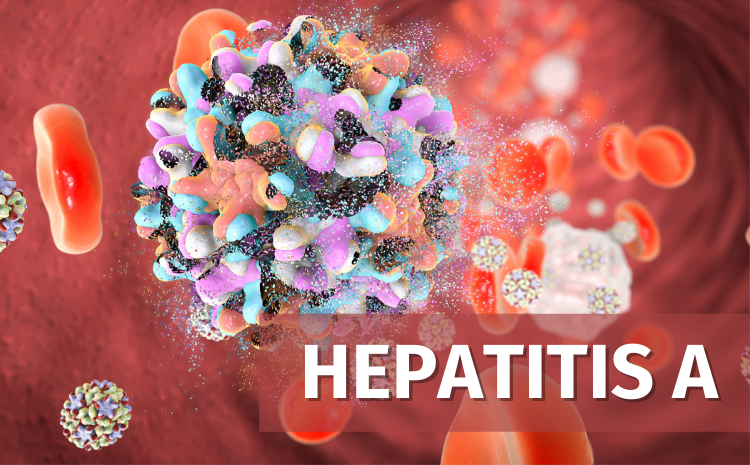
Hepatitis C Arkansas Department of Health
Hepatitis C
Hepatitis means inflammation of the liver. Toxins, certain drugs, some diseases, heavy alcohol use, and bacterial and viral infections can all cause hepatitis. Hepatitis is also the name of a family of viral infections that affect the liver; the most common types in the United States are hepatitis A, hepatitis B, and hepatitis C. Hepatitis C, also known as bloodborne non-A, non-B hepatitis, is a serious public health problem in the United States, where 150,000 to 170,000 persons get hepatitis C each year; many become severely ill and require hospitalization, and some die of liver failure.
Hepatitis C is a contagious liver disease that results from infection with the hepatitis C virus. It can range in severity from a mild illness lasting a few weeks to a serious, lifelong illness. Hepatitis C is usually spread when blood from a person infected with the hepatitis C virus enters the body of someone who is not infected.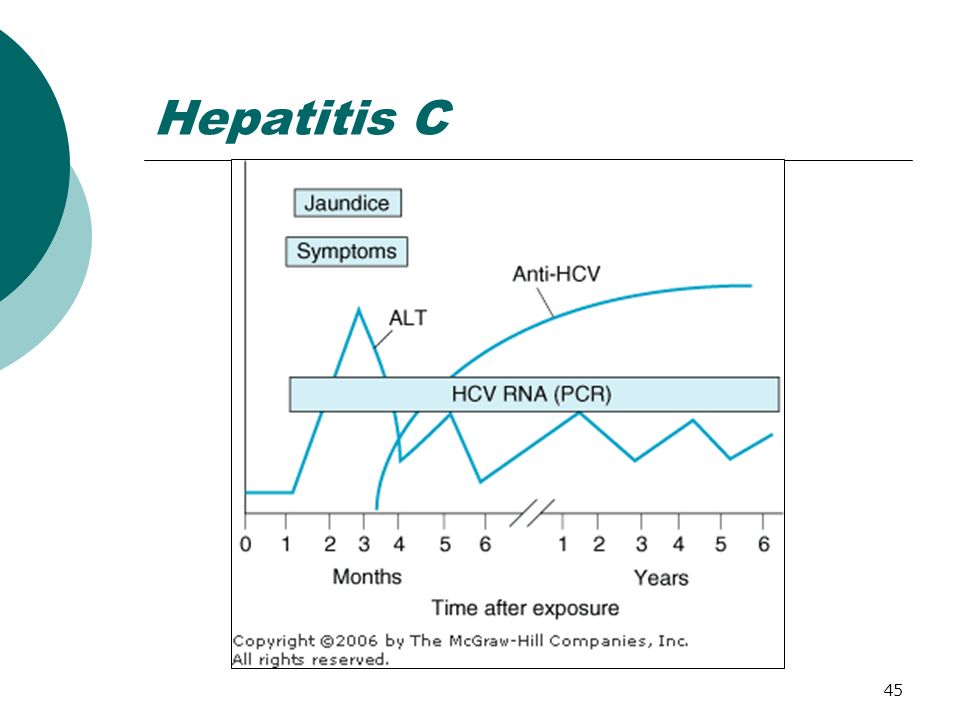 Today, most people become infected with the hepatitis C virus by sharing needles or other equipment to inject drugs. Before 1992, when widespread screening of the blood supply began in the United States, hepatitis C was also commonly spread through blood transfusions and organ transplants.
Today, most people become infected with the hepatitis C virus by sharing needles or other equipment to inject drugs. Before 1992, when widespread screening of the blood supply began in the United States, hepatitis C was also commonly spread through blood transfusions and organ transplants.
Hepatitis C can be either “acute” or “chronic.” Acute hepatitis C virus infection is a short-term illness that occurs within the first 6 months after someone is exposed to the hepatitis C virus. For most people, acute infection leads to chronic infection. Chronic hepatitis C is a serious disease than can result in long-term health problems, or even death.
Like other bloodborne diseases, hepatitis C can be prevented with proper precautions. In addition, a blood test is available for hepatitis C screening. Read this pamphlet to learn what puts you at risk for hepatitis C, how you can protect yourself from this disease, how you can be tested, and what to do if you have hepatitis C.
There is no vaccine for hepatitis C. The best way to prevent hepatitis C is by avoiding behaviors that can spread the disease, especially injection drug use.
The best way to prevent hepatitis C is by avoiding behaviors that can spread the disease, especially injection drug use.
What is hepatitis C?
Hepatitis C is a liver disease caused by hepatitis C virus (HCV), which is found in the blood of persons who have this disease. The infection is spread by behaviors involving contact with the blood of an infected person and by blood transfusions.
How great is the risk for hepatitis C?
About 40% of all persons who get hepatitis C do not know how they were infected with HCV. If you do not engage in any of the behaviors listed below, your risk for hepatitis C is probably low. However, if you are involved in any of these behaviors, your risk for hepatitis C could be very high.
You are at risk for hepatitis C if you:
- have ever injected drugs
- have a job that exposes you to human blood
- are a hemodialysis patient
- have ever received a blood transfusion
You may be at risk if you:
- have multiple sex partners
- live with a person who has hepatitis C
What are the symptoms of hepatitis C?
If you have hepatitis C, you may have:
- yellowing of the skin and eyes
- loss of appetite
- nausea and vomiting
- fever
- extreme fatigue
- stomach pain
Some persons who are infected with HCV have no symptoms and can infect others without knowing it.
How serious is hepatitis C?
In the United States, approximately 600 persons each year die of liver failure shortly after getting hepatitis C. About half of all persons who get hepatitis C never fully recover and can carry the virus for the rest of their lives. These persons have chronic (or lifelong) hepatitis C, and some may eventually develop cirrhosis (scarring) of the liver and liver failure.
How is HCV spread?
HCV is spread primarily by exposure to human blood. A person may get hepatitis C by sharing needles to inject drugs or through exposure to human blood in the workplace. Although the risk of getting hepatitis C from a blood transfusion still exists, this risk is very low because donated blood has been screened for HCV since May 1990.
Hepatitis C has been transmitted between sex partners and among household members; however, the degree of this risk is unknown.
There is no evidence that HCV is spread by sneezing, coughing, hugging, or other casual contact.
HCV cannot be spread by food or water.
A person who has had other types of viral hepatitis, such as hepatitis A or hepatitis B, can still get hepatitis C.
How can you find out if you have hepatitis C?
A blood test is available for hepatitis C screening. The test shows if a person has been infected with HCV; however, it does not distinguish between recent and old infection. In addition, the test does not distinguish between persons who are infectious and those who have completely recovered and cannot pass the infection on to anyone else.
What if your test for hepatitis C is positive?
If you have a positive test result and have risk factors for hepatitis C or have signs of liver disease, you probably have been infected with HCV. However, if you have no signs of liver disease and do not engage in high risk behaviors, your hepatitis C positive test result may be a “false positive.” Contact your doctor to determine whether your hepatitis C test result is accurate and whether additional tests are needed.
What if you have hepatitis C?
If you have hepatitis C:
- Do not donate blood, plasma, body organs, other tissue, or sperm.
- Do not share toothbrushes, razors, or other items that could become contaminated with blood.
- Cover open sores or other breaks in your skin.
HCV may be spread by sexual contact with an infected person. To reduce the chances of spreading HCV by sexual contact, follow these “safer-sex” guidelines:
- Use latex condoms to prevent the exchange of body fluids.
- Have only one sex partner
- If you have multiple sex partners, reduce the number of your sex partners to prevent others from getting infected
- Inform your sex partners about your illness
Hepatitis C Testing
A new multi-area study suggests that only half of Americans with hepatitis C receive complete testing for the virus.
- Approximately three million Americans are living with hepatitis C and up to 75 percent don’t know they are infected – placing them at serious risk for liver disease, cancer, and death.

- Only half of Americans identified as ever having had hepatitis C received follow-up testing showing that they were still infected, according to an analysis of data from a multi-area study published today. This data suggests that even among individuals who receive an initial antibody test, as many as half do not know for sure if they still carry the virus.
- The vast majority of persons living with hepatitis C are baby boomers (individuals born from 1945 through 1965). In fact, the snapshot of diagnosed hepatitis C cases and deaths provided by this analysis underscores the severe impact among this population.
- CDC is issuing updated guidance to reinforce current recommendations for hepatitis C testing and to ensure people infected with hepatitis C are properly tested and identified. Testing all baby boomers properly is critical to stem the increasing toll of death and disease from hepatitis C in this nation.
CDC recommends that everyone in the U. S. born from 1945 through 1965 be tested for hepatitis C in order to increase the proportion of those who know they are infected and linked to care. CDC also recommends that other populations at increased risk for hepatitis C get tested.
S. born from 1945 through 1965 be tested for hepatitis C in order to increase the proportion of those who know they are infected and linked to care. CDC also recommends that other populations at increased risk for hepatitis C get tested.
Click here to go to the Hep C FAQs.
Hepatitis C Symptoms. Diagnosing Hepatitis C
Talk to your doctor about getting tested for Hepatitis C if you:
- Are a current or former drug user who used needles to inject, even if you only did this one time or did it many years ago
- Have a sex partner who has chronic Hepatitis C or have had many sex partners
- Had your blood filtered by a machine (hemodialysis) for a long period of time because your kidneys weren’t working
- Received a blood transfusion or organ transplant from a donor before July 1992
- Received a blood clotting factor to treat a bleeding disorder (like hemophilia) before 1987
- Are a healthcare worker and were exposed to blood through a needle stick or had other contact with blood or bodily fluids
- Have HIV
- Have evidence of liver disease, such as abnormal liver tests
- Were born between 1945 and 1965.
 The Centers for Disease Control and Prevention (CDC) recommends a one-time screening for all baby boomers.
The Centers for Disease Control and Prevention (CDC) recommends a one-time screening for all baby boomers.
Learn more, use the Centers for Disease Control’s Hepatitis Risk Assessment tool.
What the CDC Recommends
Were you born between 1945 and 1965? If so, then you’re a member of the Hepatitis C generation. The CDC (Center for Disease Control) recently recommended that all people born between during this time have a 1-time screening test for Hepatitis C. We now have new drugs that can treat and cure Hepatitis C so you should go get tested today.
Read the CDC Hepatitis C Fact Sheet
The life you save may be your own! Please contact your local healthcare provider.
Tests to Diagnose Hepatitis C
How is Hepatitis C diagnosed?
There are two main blood tests typically used to diagnose Hepatitis C. First, you’ll have a screening test that shows if you’ve ever had Hepatitis C at some point in your life. If this test is positive, you’ll have a second test to see if you have Hepatitis C now. These blood tests are described below:
If this test is positive, you’ll have a second test to see if you have Hepatitis C now. These blood tests are described below:
Hepatitis C antibody test
This is the screening test used by doctors to show whether or not you have ever been exposed to Hepatitis C at some time in your life, by detecting antibodies in your blood. Antibodies are substances your body makes to fight off all kinds of infections. If you were ever infected with Hepatitis C, your body would have made antibodies to fight the virus.
If the test result is:
- Negative, it means you have not been exposed to Hepatitis C and further testing is usually not needed.
- Positive, you have had Hepatitis C at some point. However, it does not tell you whether you have it now. You’ll need to see your doctor for another test – the Hepatitis C RNA test – to determine if the virus is still active and present in your blood.
Hepatitis C RNA Qualitative Test
This test will determine whether or not you are currently infected with Hepatitis C. It is often called the PCR test because of the process used (polymerase chain reaction – hence PCR). It looks for the genetic material (RNA) of the Hepatitis C virus in your blood.
It is often called the PCR test because of the process used (polymerase chain reaction – hence PCR). It looks for the genetic material (RNA) of the Hepatitis C virus in your blood.
If the test result is:
- Positive, it is reported as “detected.” This confirms that you have Hepatitis C.
- Negative, it is reported as “not detected.” This means that even though you might have been exposed to the virus at some point, your body has cleared the infection on its own.
Hepatitis C RNA Quantitative Test
The quantitative test measures the amount of Hepatitis C virus present in your blood. This measurement is called the “viral load,” and is reported as an exact number.
This test is often used to monitor a person’s response to treatment for Hepatitis C by comparing the amount of virus in your bloodstream before, during, and after treatment. If you have lower levels of virus in your blood before starting treatment, you may have a better chance of getting rid of the virus.
Additional Tests You Might Need
Once you’ve been diagnosed with Hepatitis C, your doctor will likely order a number of tests to find out about the health of your liver and decide on a treatment plan that’s most appropriate for you.
Hepatitis C genotype
The Hepatitis C genotype refers to a specific “strain” or type of the Hepatitis C virus. There are six major types of Hepatitis C around the world: genotypes 1, 2, 3, 4, 5 and 6. In the United States, genotypes 1, 2, and 3 are common:
- Genotype 1: Most Americans (nearly 75%) with Hepatitis C have this type
- Genotype 2: About 10% of Americans with Hepatitis C have this type
- Genotype 3: About 6% of Americans with Hepatitis C have this type
The genotype of Hepatitis C does not change over time, so you only need to get tested once.
Genotype tests are done before a person starts treatment. Hepatitis C treatment works differently for different genotypes, so knowing your genotype helps your doctor choose the best treatment for you.
Testing for Hepatitis A and Hepatitis B
Your doctor may test to see if your body is immune to Hepatitis A and Hepatitis B. If these tests show no prior exposure or protection, he or she will recommend that you be vaccinated against these two viruses to eliminate the chance of becoming infected.
Liver function tests (LFTs) or liver enzymes
Now that you have Hepatitis C, your liver may not work as well. Liver function tests are a group of blood tests that detect inflammation and damage to the liver. They are used to detect, evaluate, and monitor liver disease and damage.
The cells in the liver contain proteins called enzymes, which are chemicals that help your liver do its work. When liver cells are damaged or destroyed, the enzymes in the cells leak out into the blood where they can be measured by blood tests. Liver enzyme testing usually checks the blood for two main enzymes:
- ALT (alanine aminotransferase)
- AST (aspartate aminotransferase)
Liver function tests also include ALP (alkaline phosphatase) and total bilirubin, among other things.
If your liver is damaged due to inflammation, enzymes pass out of your liver into your bloodstream making the levels of ALT and AST higher than normal. However, it’s common for people with chronic Hepatitis C to have liver enzyme levels that go up and down over time, sometimes returning to normal for as long as a year. So even if you have Hepatitis C, it’s possible for your liver enzyme tests to come back as normal.
The ALT and AST levels do not tell you how much scarring (fibrosis) there is in your liver and they do not predict how much liver damage will develop. However, if your total bilirubin is elevated, that could be a sign of cirrhosis (advanced scarring) and needs further investigation.
Tests to measure liver scarring or fibrosis
It’s important that you get some measure of the amount of scarring in your liver. This will guide your Hepatitis C treatment, as well as the long-term management of your liver health. Your Hepatitis C provider will make a recommendation for one of the following tests:
In order to determine whether the virus has caused scarring to your liver, your doctor may order a liver biopsy.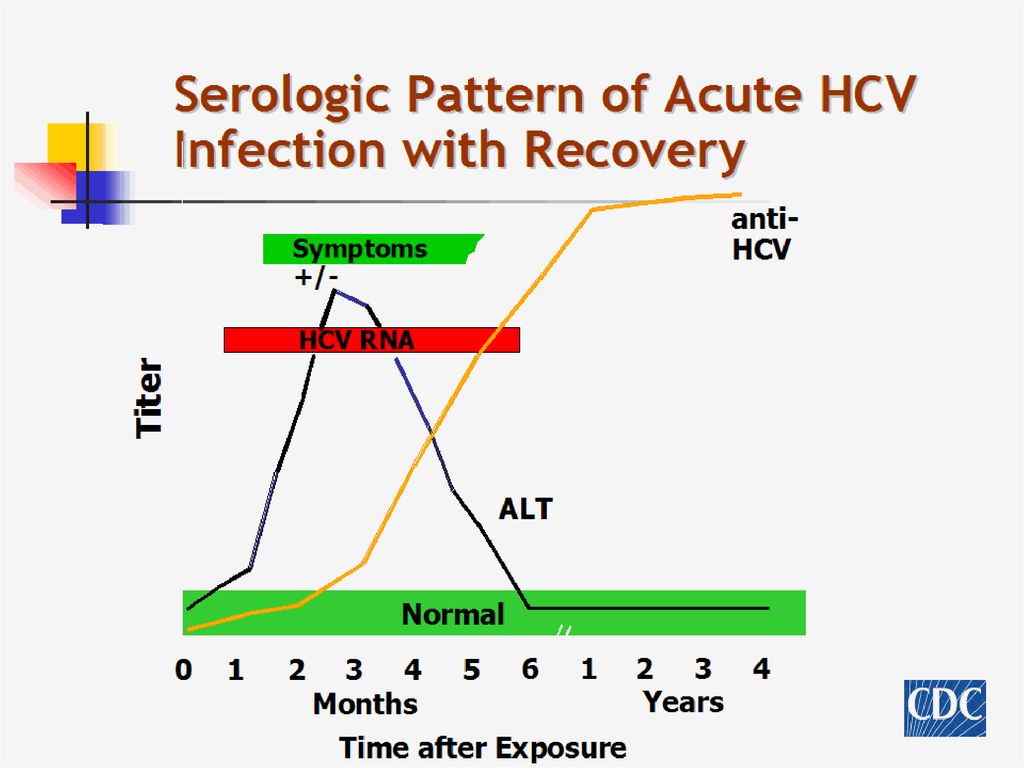 During a biopsy, your doctor will insert a needle between your ribs into your liver to collect a small sample of liver tissue for laboratory testing.
During a biopsy, your doctor will insert a needle between your ribs into your liver to collect a small sample of liver tissue for laboratory testing.
Instead of a liver biopsy, some providers will test for liver stiffness by using a special ultrasound machine, the most common being FibroScan. The more scarring that is present in the liver the stiffer it is. This exam, called transient elastography is painless and non-invasive. If you are scheduled for this test, do not eat or drink for two hours beforehand.
There are a number of blood tests available to estimate the amount of scarring in the liver.
Imaging tests
Your doctor may order tests that take images, or pictures, of your liver to make sure you do not have liver cancer. Different types of images can be obtained by using various types of equipment including ultrasound, a CT (computerized tomography) scan, or MRI (magnetic resonance imaging). If you have cirrhosis, these tests will be used to check for cancer as part of a screening program.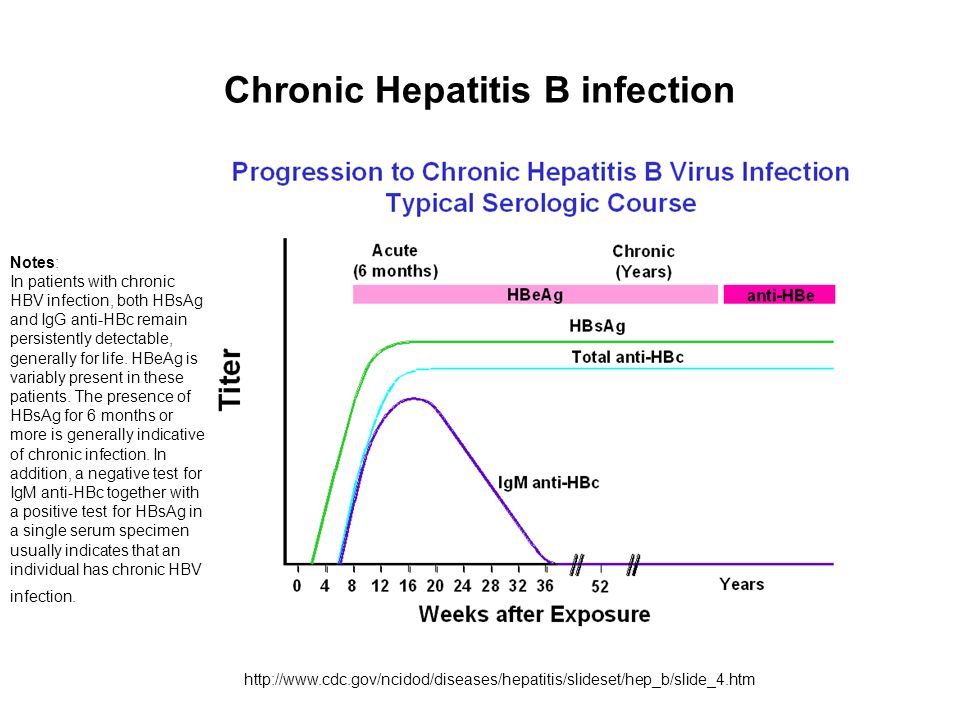 Unless your Hepatitis C is very advanced, these tests will not tell you about your liver function or the overall health of your liver. Talk to your healthcare provider about why the test is being done.
Unless your Hepatitis C is very advanced, these tests will not tell you about your liver function or the overall health of your liver. Talk to your healthcare provider about why the test is being done.
Ask your doctor to explain all your test results and don’t hesitate to ask questions. This will help you have a better understanding of what’s happening in your body and why your healthcare provider is recommending a particular course of treatment.
90,000 The Association of Human Herpes Virus Type 6 with Chronic Pelvic Pain Syndrome: A Clinical Case | Kovalyk V.P., Yurlov K.I., Gomberg M.A., Shuvalov A.N., Malinovskaya V.V., Kushch A.A.
Epidemiology, pathophysiology and possible relationship of HHV-6 with clinical syndromes
Human herpes virus type 6 (HHV-6) was first discovered in 1986 in an HIV-positive patient who suffered from lymphoproliferative disease [1].
Like cytomegalovirus and herpes simplex virus type 7, HHV-6 is classified as a beta herpesvirus. There are two different subgroups of it: HHC-6A and HHC-6B, which are 95% genetically identical. Twenty years after the discovery of HHV-6, the differences between its variants reached such significance that they began to be considered as two different types.
There are two different subgroups of it: HHC-6A and HHC-6B, which are 95% genetically identical. Twenty years after the discovery of HHV-6, the differences between its variants reached such significance that they began to be considered as two different types.
HHV-6 consists of an icosahedral capsid surrounded by a tegument in a lipid envelope with a diameter of about 200 nm [2].
More than 90% of people acquire HHV-6B in early childhood in the form of sudden exanthema between 6 months.and 2 years after the loss of maternal protective antibodies. Infection with HHV-6A occurs at a later age and is not accompanied by any symptoms. Antibodies to HHV-6 are found in more than 90% of the population of developed countries [3]. After primary infection, HHV-6A and HHV-6B remain in the body for life in a latent state and can be reactivated, causing a lytic infection. In the macroorganism, HHV-6A and HHV-6B are found in various tissues and organs: in the cells of the brain, in the tonsils, salivary glands, kidneys, liver, lymph nodes, testes, in endothelial cells, monocytes and macrophages.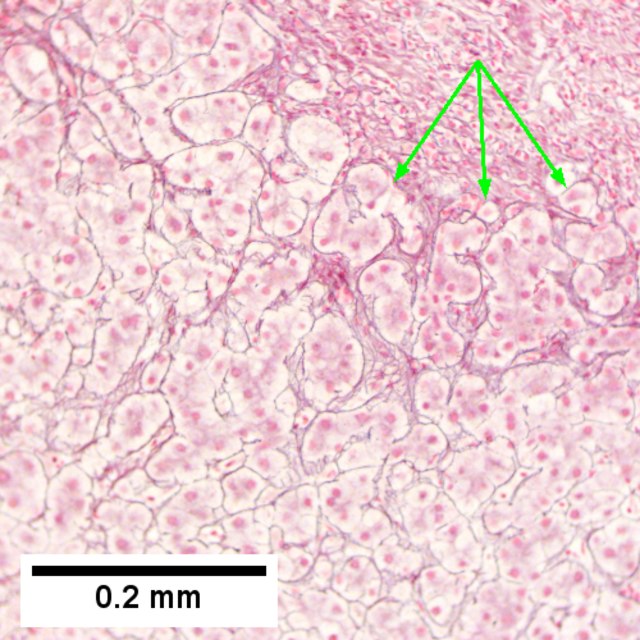 HHV-6A and HHV-6B are T-lymphotropic viruses, but the preferred loci of latent infection are cells of the central nervous system (CNS), bone marrow and peripheral blood mononuclear cells [4]. A latent virus can be reactivated in immunocompetent, and, which happens much more often, in immunocompromised individuals. Reactivation of HHV-6 is associated with epileptic seizures, encephalitis, and graft rejection [5–7].
HHV-6A and HHV-6B are T-lymphotropic viruses, but the preferred loci of latent infection are cells of the central nervous system (CNS), bone marrow and peripheral blood mononuclear cells [4]. A latent virus can be reactivated in immunocompetent, and, which happens much more often, in immunocompromised individuals. Reactivation of HHV-6 is associated with epileptic seizures, encephalitis, and graft rejection [5–7].
HHV-6 infects CD4 + lymphocytes, leading to a decrease in their level, which may be a cofactor for AIDS progression, but further studies are required for proof [8].
HHV-6 has a tropism for neurons and dendritic cells of the central nervous system. Of the two variants, HHV-6A is more neurovirulent, as evidenced by its increased concentration in the brain plaques in multiple sclerosis. Other human herpesviruses, during latency, are in the form of a ring-shaped episome in the nucleus of the host cells. However, HHV-6A and HHV-6B can integrate into chromosomes and be transmitted vertically through germ cells. The frequency of chromosomal integration in the population of healthy blood donors is 0.8–1.5% [9].The integrated genome of the virus is localized in the terminal regions of the chromosomes – telomeres. In individuals who have inherited the chromosomal integration of HHV-6, one copy of the virus is found per cell in the body. Viral integration should be suspected when the virus concentration is 10 5 copies / ml and higher.
The frequency of chromosomal integration in the population of healthy blood donors is 0.8–1.5% [9].The integrated genome of the virus is localized in the terminal regions of the chromosomes – telomeres. In individuals who have inherited the chromosomal integration of HHV-6, one copy of the virus is found per cell in the body. Viral integration should be suspected when the virus concentration is 10 5 copies / ml and higher.
There are few data for the participation of HHV-6 in the occurrence of pain syndromes. Thus, A. Krumina et al. [10] report a significant association of HHV-6 with fibromyalgia. In 23 of 43 patients with this disease, HHV-6 DNA was detected in the peripheral blood, while in the control group, infection was detected in only 3 out of 50 people.At the same time, 29 of 43 patients with fibromyalgia had various degrees of damage to the A-delta and C-nerve fibers, impaired temperature and pain sensitivity.
In addition, the role of HHV-6 in multiple sclerosis has been discussed for more than 25 years [11, 12].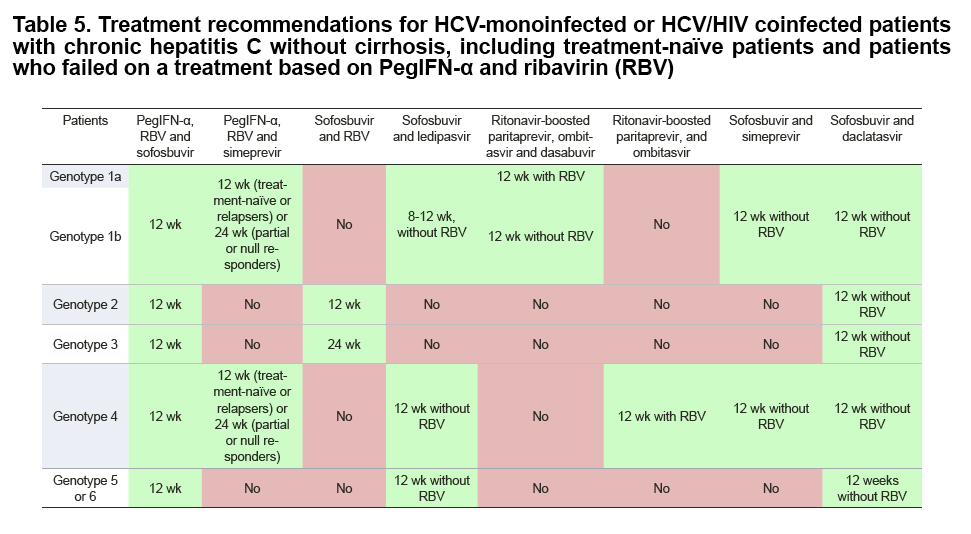 Among other causes, HHV-6 is considered one of the most significant infectious triggers that trigger the autoimmune process in this disease. Viruses were detected in CNS tissue samples, and serological studies to detect anti-HHV-6 antibodies in blood serum and CSF indicate an association of this virus with multiple sclerosis.In addition, there are data in situ detection of viral DNA. At the same time, the frequency of pain syndrome (including pelvic pain) in patients with multiple sclerosis reaches 50–80%.
Among other causes, HHV-6 is considered one of the most significant infectious triggers that trigger the autoimmune process in this disease. Viruses were detected in CNS tissue samples, and serological studies to detect anti-HHV-6 antibodies in blood serum and CSF indicate an association of this virus with multiple sclerosis.In addition, there are data in situ detection of viral DNA. At the same time, the frequency of pain syndrome (including pelvic pain) in patients with multiple sclerosis reaches 50–80%.
It should be noted that it is often difficult to diagnose HHV-6 infection on the basis of clinical manifestations, which precludes the appointment of etiologically justified treatment. Laboratory diagnosis of HHV-6 infection is carried out using serological and molecular genetic studies. The most informative is the quantitative determination of viral DNA in peripheral blood and other biological fluids using real-time polymerase chain reaction (PCR).Since during primary infection and even with reactivation of HHV-6, the infection can be asymptomatic, the concentration of HHV-6 DNA, which characterizes an active, clinically pronounced infection, is conditionally determined – 1000 copies / ml and higher.
Against herpesvirus infections caused by alpha, beta and gamma HHV, drugs such as valacyclovir, ganciclovir, foscarnet (not registered in the Russian Federation) and cidofovir (not registered in the Russian Federation) are used. At the same time, the indications for the treatment of infections caused by HHV-6 have not been officially approved to date.
Due to the fact that many issues of the pathogenesis, diagnosis and treatment of HHV-6 infections have not yet been resolved, clinical observation with a successful attempt at a practical solution of these issues is of interest.
Clinical observation
Patient O., 49 years old, presented with complaints of burning sensation in the urethra, periodic pain in the perineum, scrotum, discomfort during urination, during and after ejaculation.
From anamnesis: has been suffering from chronic prostatitis for a long time. Every year he underwent therapy with antibacterial and anti-inflammatory drugs, physiotherapy – with a temporary effect. In his youth, he noted frequent relapses of genital herpes. Other sexually transmitted infections are denied.
In his youth, he noted frequent relapses of genital herpes. Other sexually transmitted infections are denied.
Concomitant diseases: Parkinson’s disease, takes levodopa 200 mg / day, benserazide 50 mg / day.On the recommendation of a neurologist, it can withstand the regime of increased physical exertion (cycling 25–40 km per day). The disease is manifested by recurrent tremors of the fingers.
Digital rectal examination: prostate gland 4 × 4 cm, painful, soft-elastic heterogeneous consistency, asymmetric due to the increased right lobe, without focal seals, the mucous membrane above the gland is mobile.
Chronic prostatitis symptom index CPSI – 15 (pain – 8, urinary disorders – 2, the effect of symptoms on daily life – 5), quality of life QoL – 4, which corresponds to moderate severity of pelvic pain …
PCR method Chlamydia trachomatis, Mycoplasma genitalium, Trichomonas vaginalis, Neisseria gonorrhoeae, Ureaplasma spp.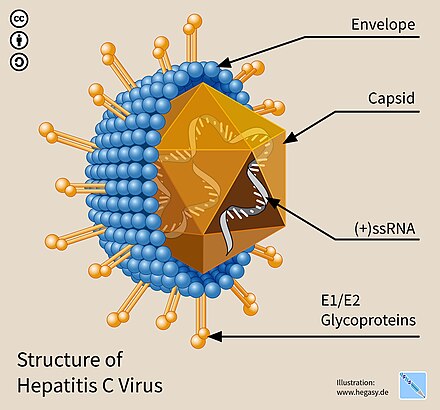 , Mycoplasma hominis, herpes simplex virus (HSV) types 1, 2 were not detected.
, Mycoplasma hominis, herpes simplex virus (HSV) types 1, 2 were not detected.
When examining the secretion of the prostate gland (prostate gland), the content of leukocytes 0-4 in the field of view, lecithin grains – scanty. General analysis of urine within normal limits, a smear from the urethra revealed leukocytes 0-1-0 in the field of view.
Bacteriological examination before post-massage urine sample: Staphylococcus epidermidis 10 4 CFU / ml in both samples, which corresponds to abacterial CP / CPPS.
In FSBI “NITsEM named after N.F. Gamaleya “of the Ministry of Health of Russia, a study was carried out by real-time PCR (PCRrv) to determine the DNA of five HHV: HSV-1, HSV-2, Epstein-Barr virus, cytomegalovirus, HHV-6. Used sets of reagents for PCR “AmpliSens HHV1 / HHV2-screen-FL” and “AmpliSens EBV / CMV / HHV6-screen-FL” (LLC “InterLabService”, Russia). The β-globin gene was used as an endogenous internal control.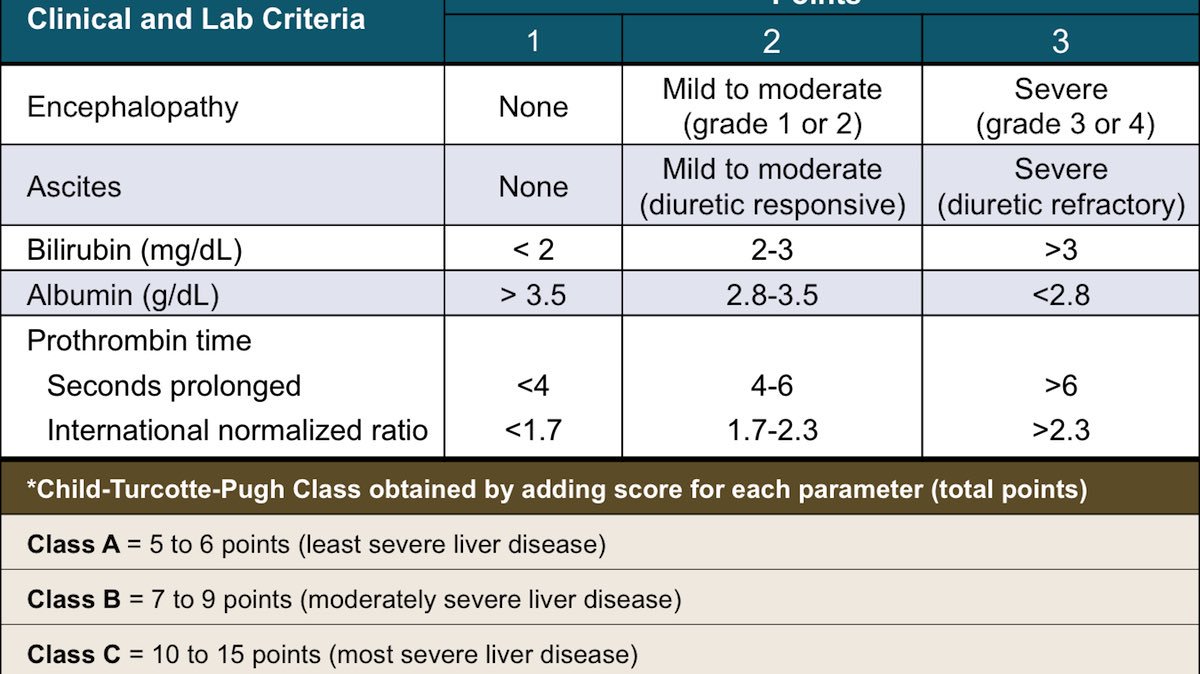
The clinical material was whole blood, urethral scraping (UU), AOF, ejaculate.The following results were obtained: DNA of HSV-1, HSV-2, Epstein-Barr virus and cytomegalovirus was not detected. HHV-6 DNA was found in high concentrations in all studied clinical materials: in the SU – over 4 million copies / ml, in the AOJ – 925 thousand copies / ml, in the ejaculate – 177 thousand copies / ml. The high content of HHV-6 in the blood (600 thousand copies / ml) suggested the chromosomal integration of the virus.
With uroflowmetry: maximum urine flow rate (Qmax) – 17.3 ml / s, average velocity (Qav) – 8.6 ml / s, with urination volume – 157 ml.With TRUS: the volume of the prostate gland is 46 cm 3 without foci of nodular hyperplasia, calcifications along the urethra are visualized.
Upon receipt of the results of the virological study, the patient confirmed that he had previously been diagnosed with HHV-6 and that he had been treated in one of the clinics in Moscow 2 years before applying for this.
Diagnosis: chronic pelvic pain syndrome IIIB, chronic herpesvirus type 6 infection.
90,025 treatment was performed: valacyclovir 500 mg, 1 tablet 2 r / day for 3 months, VIFERON ® (interferon α-2b with antioxidants – vitamins E and C) in the form of rectal suppositories, 1 suppository 3 million IU 2 r / day for 10 days, then 3 r / week. for another 3 weeks.
In the course of treatment, the patient underwent repeated examinations of the ALE twice – after 2 weeks. and 4 weeks. from the start of treatment. The leukocyte count was 40-60 in the field of view, which is why the initial diagnosis was changed to CP / CPPS IIIA.
By the end of therapy, the state of health subjectively improved. The most noticeable improvement was manifested in the form of a decrease in burning of the urethra, a decrease in pain during and after ejaculation. The CPSI score on the 90th day was 8 (4 + 1 + 3) points, on the QoL scale – 2 points, that is, a decrease in all indicators was noted.
ALE microscopy: leukocytes 10–15 in the field of view, the content of lecithin grains is moderate. Virological study revealed a significant decrease in the concentration of HHV-6 (table.1).
Digital rectal examination: the prostate gland 4 × 4 cm, almost painless on palpation, soft elastic consistency, asymmetric due to an increase in the right lobe, without focal seals, the mucous membrane above the gland is mobile.
Subjectively, the course of the existing neurodegenerative disease did not change during the observation period.
Thus, in the patient, the only likely etiological agent of CP / CPPS IIIA was HHV-6.Against the background of specific antiherpetic therapy and interferon therapy, there was a decrease in pain, symptoms of dysuria, an improvement in clinical and laboratory parameters (virus concentration, CPSI score). High final concentrations of HHV-6 with a good clinical response can be explained by the possible chromosomal integration of the virus, in which each cell of the body contains its genetic material.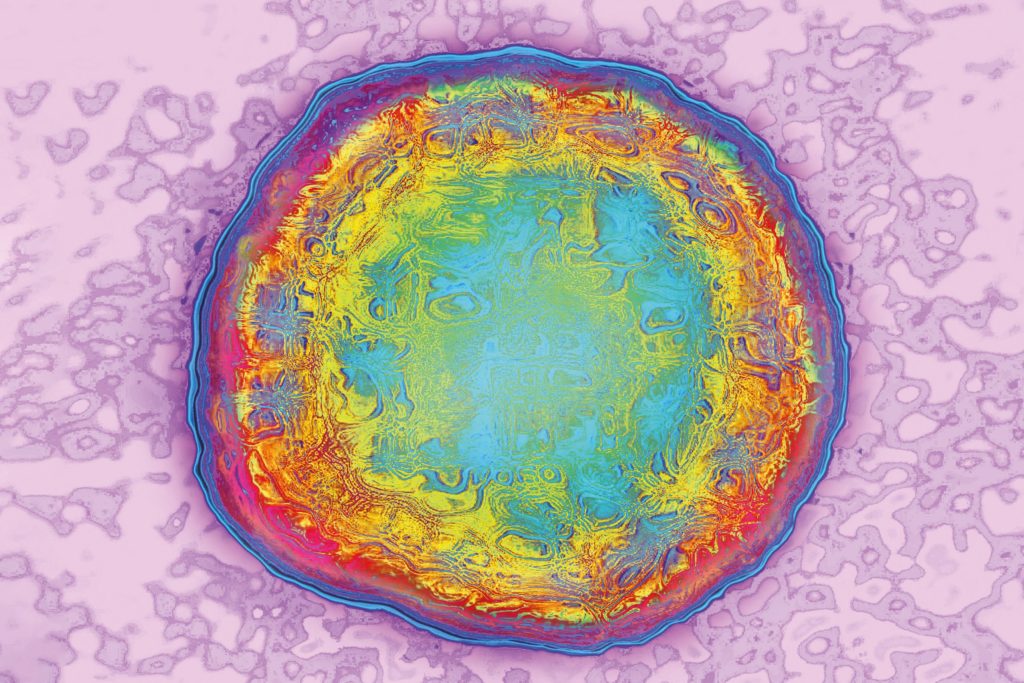
It is important to note that the patient’s main complaint was a burning sensation in the urethra, while the maximum concentration of the virus was found precisely in this urogenital locus.As a result of antiviral therapy, which included the drug VIFERON ® (interferon α-2b with antioxidants – vitamins E and C) in the form of rectal suppositories, it was possible to reduce the concentration of the virus in the contents of the urethra by two orders of magnitude, which was sufficient to eliminate urethral symptoms.
The subsequent years of observation of this patient showed that the symptoms of CP / CPPS were mild and did not force the patient to seek medical help.In the future, a more effective therapy in this case may be genomic editing using short palindromic repeats, regularly spaced in groups, which has shown a good antiviral effect on laboratory animals [13].
This case, as far as we know, is the first report on chromosomally integrated HHV-6 associated with CP / CPPS.
Conclusion
The widespread distribution of HHV-6 and the possibility of its verification using PCR were the beginning of an intensive study of this virus.It turned out that HHV-6 can be associated with encephalitis, epileptic seizures, pain syndromes, which is due to its neurotropism. A particularly high concentration of HHV-6 is observed in the case of its chromosomal integration into the peri-telomeric region. In this case, the virus begins to be inherited according to Mendel’s laws.
In the presented clinical case, HHV-6 was the likely cause of abacterial chronic prostatitis. Antiviral therapy aimed at suppressing the replication of HHV-6 and activating the antiviral activity of the body showed a good virological effect in the form of a decrease in viral load, which was accompanied by the achievement of stable clinical remission in a patient with pelvic pain syndrome.
Acknowledgment
The editors would like to thank Feron LLC for their assistance in the technical editing of this publication.
.
Human herpes virus type 6 in children and adults
Human herpes virus type 6 (VG6) is an infection that is no less common than herpes viruses of types 1 and 2 known to many.At first, this virus remained a “disease-free virus” for a long time, but recently its possible role as a cause of many human diseases has been increasingly discussed.
How is the herpes virus type 6 transmitted:
- The source of infection are patients with obvious clinical signs of the disease and carriers of VH6.
- The leading transmission route is airborne, contact-household (less often).
- Sexual transmission of the virus is also possible through transfusion of infected blood and transplantation of organs and tissues from infected donors.
- Vertical transmission of the virus from an infected mother to the fetus is possible, both during pregnancy and after childbirth.

- The virus can even be transmitted through saliva.
Symptoms and conditions that should alert you and force you to see a doctor:
- increase in body temperature and the appearance of a pink maculopapular rash on the skin;
- blistering skin rashes;
- enlarged lymph nodes;
- immunodeficiency states.
Symptoms of HB6 in children
In young children (0.5-3 years old), HB6 infection may be evidenced by the development of sudden erythema, which makes itself felt by an increase in body temperature up to 40 ° C. In this case, any other symptoms are most often absent.
After a decrease in temperature, a pink rash appears on the child’s body, which first covers the face, chest and abdomen, and then spreads throughout the body. After the rash appears, the body temperature no longer rises.There may be an increase in lymph nodes.
Baby roseola should not be confused with chickenpox or SARS.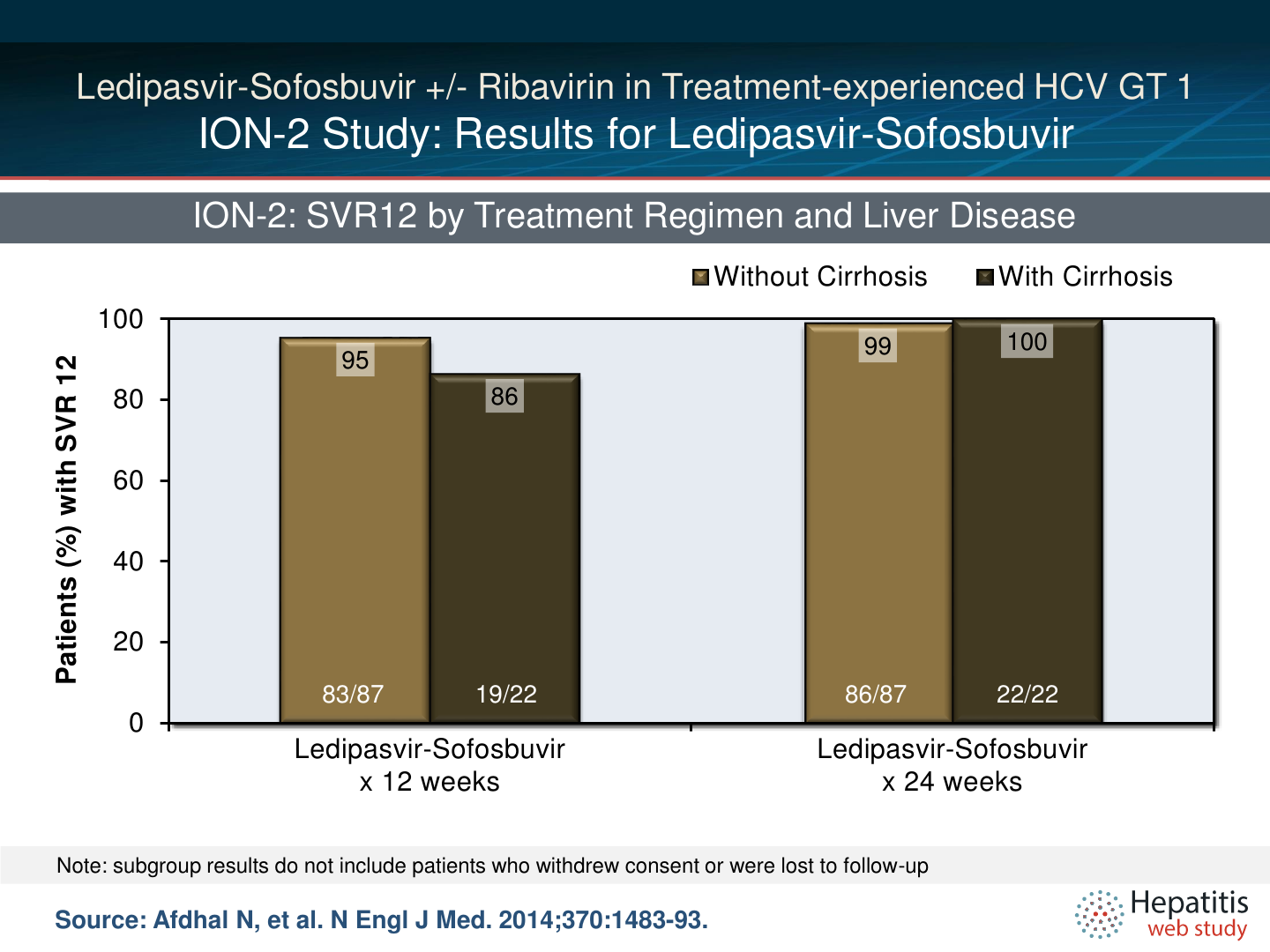 The sick child must be isolated until the clinical signs disappear and immediately consult a doctor.
The sick child must be isolated until the clinical signs disappear and immediately consult a doctor.
Manifestations of HB6 in adults:
- prolonged low-grade body temperature;
- Increased night sweats;
- sleep problems;
- weakness;
- lethargy;
- feeling of depression.
It has become difficult for you to go about your usual activities and all this does not go away even after rest – perhaps you have chronic fatigue syndrome, and at the same time you are infected with HB6. You also need the help of a doctor.
The complexity of the treatment of diseases caused by herpes viruses is associated with the genotypic characteristics of the pathogen, as well as different sensitivity to drugs.
Antiviral chemotherapy takes the leading place. Immunotherapy of herpesvirus infections, which combines preparations of interferons and immunoglobulins, is an additional, but important component of etiotropic treatment.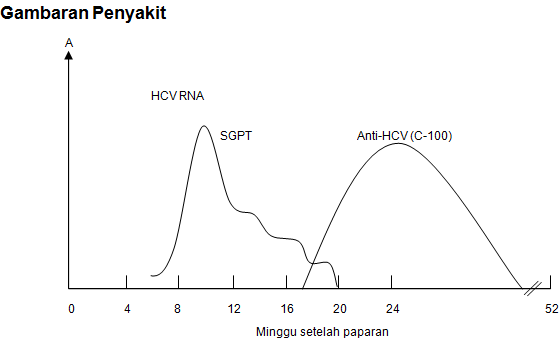
Herpes: types, symptoms, treatment and prevention
Herpes is a viral pathology in which rashes in the form of bubbles form on the skin and mucous membranes. They appear in groups and reach 2–3 centimeters in diameter. Affects different parts of the body. According to WHO statistics, around 4 billion people all over the world suffer from “colds” on the lips and mucous membranes of the mouth, and about half a billion are infected with genital herpes.
Types of herpes
Science knows 8 types of herpes.
- Herpes simplex virus type 1 (HSV-I). This type affects the skin of the face, hands, mucous membranes of the mouth, conjunctiva of the eyes, causes meningoencephalitis, neonatal herpes. You can get infected by talking, kissing.
- Herpes simplex virus type 2 (HSV-II). It affects the mucous membranes of the genitals. It is transmitted through sexual intercourse. A third of those infected have frequent relapses.
- Varicella zoster virus (VVZ).
 It is the cause of diseases such as chickenpox and shingles.
It is the cause of diseases such as chickenpox and shingles. - Epstein-Barr virus (EBV). Causes infectious mononucleosis, B-lymphoproliferative pathologies.
- Human cytomegalovirus (CMV). It is the cause of the development of primary and congenital CMV infections.
- Human herpes viruses 6,7,8 (HR-6, HR-7, HR-8). Causes exanthema in newborns.
Pathogens can remain unnoticed in the body for a long time and become activated in the event of an exacerbation of infection and a decrease in immunity.
The most common herpes simplex viruses are type 1 and type 2 Herpes simplex virus.In the external environment, they are unstable. At room temperature, they “live” up to a day, on metal surfaces – 2 hours. When heated above 50 ° C, they die within half an hour. Alcohol and chlorine-containing substances “kill” them within a couple of minutes. But freezing is quite favorable for these viruses and keeps them for up to 5 days.
Once in the body, these viruses remain with a person until the end of his life. Most often they become infected with them at an early age.
Most often they become infected with them at an early age.
Symptoms of herpes
Let us describe the signs characteristic of HSV-1 and HSV-2.
Herpes of the first type
- Sometimes the infection develops without any signs. Many people are unaware that they are carriers of the virus.
- Obvious manifestations include painful blisters, a red border around the mouth, and sores in the mouth.
- Before their appearance, itching and tingling sensations, burning sensations occur.
- The frequency of relapses depends on the individual.
- HSV-1 may cause genital herpes.It proceeds imperceptibly or with slight signs that are difficult to recognize. If it manifests itself actively, then you can understand that a person is sick by the presence of bubbles and ulcers in the genital area. The first time, as a rule, the disease is difficult. Genital herpes caused by HSV-1 usually recurs rarely, which cannot be said about the pathology caused by the type 2 virus.
Herpes of the second type (HSV-2)
- This disease may also not manifest itself in any way. As with HSV-1, carriers of the virus are unaware of their condition.
- Research by WHO shows that one third of people who get sick have symptoms.
- Symptoms include the formation of vesicles and ulcers in the genital and anal area.
- Body aches and fever may be troubling. Lymph nodes are often inflamed.
- Before the appearance of ulcers, patients may notice a tingling sensation and intermittent shooting pain in the thighs and buttocks.
Herpes treatment
Diagnosis and treatment of various pathologies caused by these viral agents are under the jurisdiction of a dermatovenerologist.Anamnesis and clinical picture allow the specialist to make an accurate diagnosis. In difficult cases, the doctor prescribes additional examinations: clinical and biochemical blood tests, urinalysis.
Of the most effective drugs, antiviral agents are noted. However, experts believe that the infection cannot be completely cured. You can only muffle the manifestations and reduce the frequency of relapses.
Complications
However, this virus and its consequences for the body should not be underestimated.
- When a baby comes into contact with viral agents in the genital tract during childbirth, neonatal herpes can develop. In some cases, the newborn is threatened with neurological disability, and sometimes death. Moreover, it is most dangerous if a woman first becomes infected with the virus in the last weeks of pregnancy.
- The link between HSV-2 and HIV has been proven. Diseases caused by a pathogen increase the chances of contracting HIV. Herpetic infection in this case is difficult and often recurs.Among the possible undesirable consequences for health, such diseases as hepatitis, pneumonitis, esophagitis and others are called.
- When HSV-induced neuroinfection occurs, the facial and trigeminal nerves are affected, and neuralgia and paralysis may develop. Herpes encephalitis and meningoencephalitis are also dangerous.
- With a pronounced decrease in immunity, herpes infection can affect the internal organs, with localized rashes in the perineum, disrupt the function of the bladder.
- Ophthalmic herpes can cause keratitis, in which the cornea becomes inflamed, retinitis, when the retina is affected, or rapidly progressive retinal necrosis. The latter pathology leads to blindness in 80% of cases.
Prevention
- It is possible to become infected during the period when the symptoms are clearly visible, and in those cases when the infection proceeds without signs.
- If symptoms are pronounced, patients should avoid communicating with other people and use separate dishes, cutlery, towels.
- Patients with severe genital herpes should avoid intimacy with a partner and use condoms at all times.
- Pregnant women who have noticed symptoms of the disease should inform their doctor about their condition.
Herpes is an insidious disease that sometimes does not manifest itself. It is impossible to protect yourself from it 100%, however, you can minimize the risk of infection with an obvious manifestation of symptoms.And, of course, you should immediately consult a doctor if the symptoms are very intense. This will help avoid complications.
FIND OUT PRICES
90,000 Pediatrician Mikhail Nikolsky: Herpes – to treat or not to treat – Mass media about us
Alexandra Petrovskaya: Good afternoon. This is a program for the biggest ones. Mikhail Nikolsky, a pediatrician and candidate of medical sciences, is with us in the studio. Mikhail Andreevich, hello.
Mikhail Nikolsky: Good afternoon.
A.P: We are here today about your scientific work on herpes types 6 and 7. Let’s try to explain to the audience what it is, and, most importantly, where these types come from, and what other types – the first, second, third, and so on – go to 6 and 7.
MN: In total, there are 8 or 9 types of herpes, depending on how you count. The first and second types are common herpes, which causes sore lips. The third type is the herpes zoster virus, which causes chickenpox or shingles in adults.
A.P .: That is, what we call chickenpox is, in fact, the same herpes?
MN: Not the same, this is a completely different herpes, but also herpes.
A.P .: By what principle are they all united under this name?
MN: It’s difficult. When scientists studied the DNA of these viruses, it turned out that they all have similar related traits. The fourth type, the Epstein-Barr virus, causes infectious mononucleosis. The fifth type is what everyone knows as cytomegalovirus.This is also often an infection, and mostly children.
And finally, types 6 and 7 are what I do. Most often, they cause roseola in children – a three-day fever or sudden exanthema. Next comes the eighth type of herpes, it occurs with Kaposi’s sarcoma. It is a serious illness that predominantly occurs in HIV-infected patients.
A.P .: What, apart from the common name and some similarity of DNA, still unites them? Maybe there are general methods of therapy or similar consequences of the effect of the virus on the body?
M.N: Firstly, unlike many other viruses, there is a cure for herpes. This distinguishes these viruses from others in many ways, because there is no cure for a huge number of viruses.
A.P .: But what about all these fashionable antiviral drugs that are advertised everywhere?
MN: Everything that is advertised on TV is, unfortunately, rather fakes.
A.P .: Fakes are prohibited.
MN: Fakes are prohibited, but, apparently, advertising of drugs without proven effectiveness is allowed.
A.P .: This is a topic for a separate program.
MN: This is a misfortune for our country, because our fakes have even got into clinical guidelines. And we treat people with all these “fuflomycins”. Moreover, we are obliged to treat them, because we have the appropriate clinical guidelines.
A.P .: Is this someone lobbying?
MN: Of course, this is being lobbied, it has been paid for. And what to take if, excuse me, we have one of the members of the Russian Academy of Sciences – a homeopath.
A.P .: In these words you can feel your contempt for homeopathy.
MN: From the point of view of a clinical doctor, to some extent this is yes, contempt, it is true.
Let’s go back to herpes. They have a unique feature. After a person has a primary herpes infection, these viruses do not leave the human body. All herpes that a person has encountered in life remain in him forever.
A.P .: I have met with the statement that it is difficult to meet on Earth a person over 10 years old who would not have antibodies to one or another type of herpes.
MN: And not only antibodies, but even the herpes themselves. Almost all people after a certain age in saliva, in the blood or in other tissues, you can find one or another herpes. The problem of their diagnosis is connected with this – doctors are very often confused. Colleagues unknowingly, but with good intentions, prescribe frequently ill patients, for example, saliva tests for the Epstein-Barr virus, for cytomegalovirus, for herpes type 6, type 7, and find them in saliva. And this is the norm.
A.P: Do they start to heal?
MN: Yes, absolutely right. The patient does not know that this is the norm. He sees that he has a “terrible” analysis, that such and such a number of these herpes have been found, and the doctor, most likely, unknowingly, due to a lack of understanding of this problem, begins to treat the normal carriage of herpes. And how does he treat? The same fuflomycins also treats. And nothing happens.
A.P .: The bottom line – no need to treat herpes?
MN: It is necessary if it caused a serious illness – and all herpes in certain cases can cause serious illness.For example, herpes type 6 is a common cause of severe conditions in bone marrow transplant patients. If herpes after bone marrow transplantation has worsened against the background of a decrease, the actual destruction of one’s own immunity, then therapy necessarily requires powerful antiviral agents.
Why, take chickenpox – a seemingly harmless disease. But after 11 years, it passes hard and can have consequences. Therefore, it is believed that if the patient is under 11 years old, then it often goes away on its own.And if over 11 years old, then it is better not to risk it, but to prescribe acyclovir.
A.P .: Is it a drug with proven effectiveness?
MN: Yes, it acts on the chickenpox virus.
A.P .: It turns out that herpes, which is always in the body, at some point is exacerbated. For example, I heard about herpes type 6, which is a typical disease for children under 2-3 years old. It turns out that no.
MN: The fact is that herpes of the 6th type is the most common infection that always causes sudden exanthema or three-day fever or roseola.In principle, a very understandable infection: for three days the child has a high fever, then a typical maculopapular rash appears. Within two days, it disappears by itself, and the person recovers.
The infection itself can occur even through a simple kiss, as it happens with many herpes. That is, the virus can enter the child’s body through contact with the saliva of the mother, grandmother, any adult, who are usually the carrier of all herpes. And now the child carries this primary infection through the human herpes virus of the 6th type, and after that the herpes of the person of the 6th type remains in this child forever.And he will not go anywhere, and there is no way to get rid of him.
But it is necessary to treat it only in one situation – if it has caused some serious illness, which practically never occurs in healthy people. Only with severe immunodeficiencies, which usually occur during organ and tissue transplantation. There are situations where intensive treatment of herpes of the 6th type is required.
In all other cases, shock treatment is not necessary. And we must bear in mind that herpes is a very fashionable topic now.Herpes simplex virus type 6 is easy to find, which means that it can be presented in almost any disease as a possible diagnosis. And many doctors take advantage of this. For example: “I do not know what is wrong with you. Let’s look at you for what exactly is.” And here herpes of the 6th type – it definitely is, and it is.
A.P .: Another such moment. What other diseases can be associated with herpes viruses that are present in the body?
MN: As I said, herpes of the 6th and 7th types “classically” cause roseola in children.Also herpes of the 6th and sometimes, but rarely, the 7th type are associated with febrile seizures in children. There are studies that show an association of certain types of epilepsy with human herpesvirus type 6. So it turns out that herpes type 6 actually causes one of the types of epilepsy.
A.P .: This virus is present in almost everyone’s body, but not everyone has epilepsy. That is, this suggests that there is no direct connection, are there other factors that affect the appearance of this disease?
M.N: Of course, there are many factors. For example, two people have contracted the same infection: but one has a runny nose, and the other has meningitis. And the infection is the same. Of course, there are many factors involved.
A study was also conducted that associated human herpes viruses of types 6 and 7 with other diseases, suggesting a connection with multiple sclerosis. But this has not been proven. This is already a field of science, then we do not have clear indications that herpes is exactly what causes multiple sclerosis.
A.P .: During the program, we briefly talked about all herpes, outlined all the important points. And, at the end of the conversation, I want to go back to the beginning. What questions in this area are facing science today?
MN: By the way, I forgot to say that a special form of human herpes of the 6th type is the chromosomal integrated form of this virus, when herpes of the 6th type is introduced into the human chromosome and begins to be inherited by all generations.
Now we have received a grant in St. Petersburg.We conduct free examinations of all comers according to certain indications for the presence of chromosomally integrated herpes of a person of the 6th type. It is precisely the presence of chromosomally integrated human herpes of the 6th type, possibly, giving links with some diseases. It turns out that almost 1% of the world’s population has a chromosomally integrated virus built into its genome.
A.P .: Good. Remembering my student years, what hypothesis do you have in this scientific research? If something is what?
M.N: We are still recruiting a reference group, we are looking for people, we are examining them. Personally, I am now most interested in whether there are clinical manifestations of the chromosomal integration of human herpes of type 6 in newborn children. In my opinion, this is the most interesting concept; no one in the world has developed this direction yet. So far, there are preliminary results, but I am not ready to voice them yet.
A.P .: Our guest was Mikhail Nikolsky, a pediatrician and candidate of medical sciences. Thanks and have a nice day everyone!
Human Herpes Virus 7, DNA [PCR]
Study of biomaterial for the detection of genetic material (DNA) of herpes simplex virus type 7 (HHV-7) using the method of polymerase chain reaction in real time (real-time PCR).
Synonyms Russian
Herpes virus 7 type, herpes virus, HHV-7, RT-PCR.
English synonyms
HHV-7, DNA [Real-time PCR].
Research method
Real-time polymerase chain reaction.
Which biomaterial can be used for research?
Venous blood, cerebrospinal fluid, saliva, biopsy.
General information about the study
Human herpes virus type 7 (HHV-7) was first isolated relatively recently, in 1990.To date, it has been established that it is widespread and occurs in more than 90% of the adult population of the planet. HHV-7 is usually infected in childhood, although it manifests itself somewhat later than HHV-6, and in a wider age range: most people become infected by the 6-10th year of life. In the first months of life, HHV-7 is relatively rare.
HHV-7 constantly lives and multiplies only in T-lymphocytes (CD4 + T-helpers), but it can also be detected in other cells – in the tissue of the salivary glands, brain, liver, endothelium.
Considering that latent HHV-7 infection is widespread almost everywhere, it is very important to timely establish the nature of its course – active / inactive. The activation of any viral infection begins with the multiplication (replication) of the virus in the host cell. Further, in most cases, host cells die, and new viruses enter the intercellular space (interstitial fluid) to infect new cells. From here, viral particles enter various biological fluids (blood, urine, cerebrospinal fluid) and glandular secretions, where they can be detected using PCR.The presence of viral nucleic acids (DNA / RNA) in cell-free samples of biological fluids or glandular secretions is one hundred percent sign of an active viral infection.
It has been established that HHV-7 is the cause of the following diseases in persons with an uncompromised immune system: in children – pseudo-rubella, acute feverish conditions, febrile seizures, in adults – pink lichen, cytomegalovirus infections during kidney transplantation.
In addition, HHV-7 in association with HHV-6 is thought to be the cause of chronic fatigue syndrome (CFS) in adults and is associated with several lymphoproliferative diseases.
CFS was identified as an independent disease in 1988. There are several criteria on the basis of which a diagnosis is made. Here are some of them: unreasonable weakness, constant fatigue and decreased performance, sleep disturbance, in the morning – a feeling of weakness, temperature 37-38 ° C for 6 months, swollen lymph nodes (cervical, occipital, axillary), memory impairment, attention, rapid weight loss, decreased appetite – in the absence of other diseases with similar symptoms.
If several of these signs are present for six months or more, then chronic fatigue syndrome caused by HHV-7 can be suspected. It should be said that “CFS” is usually put as a “diagnosis of exclusion”: after a complete examination of the patient and exclusion of such pathologies as HIV infection, oncological diseases, various blood diseases, psychiatric and nervous diseases. People of any age are susceptible to the disease, but it has been noticed that women aged 25-49 years are more likely to suffer from it.
HHV-7 is often associated with clinical cases of Epstein – Barr – viral infection, such as mononucleosis, hepatitis, encephalitis. There are also indications that it plays a role in the development of drug intolerance (hypersensitivity).
By means of PCR, HHV-7 is detected in saliva, lymphocytes and monocytes of peripheral blood and other biological fluids.
The most likely route of transmission is airborne, with saliva, vertical transmission from mother to child during pregnancy and childbirth is potentially possible.
According to various sources, in the genital tract of HHV-7-seropositive women, the virus is found in 3% of the surveyed, while there is a tendency for a higher frequency of genital virus carriage during pregnancy (more in the last trimester). In a number of studies, HHV-7 was detected in cervical smears, while its association with human papillomavirus (HPV) significantly increases the risk of cervical cancer in such individuals. However, the literature does not describe female genital diseases associated with HHV-7.Thus, the presence of HHV-7 in the female genital tract may be important in sexual and fetal transmission of the virus during pregnancy or childbirth.
In 60-70% of adult men who are not infected with HIV, HHV-6 is found in normal and infertile semen, but HHV-7 has not yet been found in this biomaterial. Therefore, it is believed that HHV-7 is not associated with the development of oligo-, panspermia and infertility in men and men do not transmit it sexually. But in one study, 11.1% of HIV-infected men found HHV-7 in the genital tract.There are no reliable data on the association of HHV-7 with known diseases of the male reproductive system. However, in renal transplant recipients (men and women) with the development of cytomegalovirus infections against the background of immunosuppressive therapy, HHV-7 is often found in the urine (often even before the clinical manifestations of CMV infection).
What is this study used for?
- Allows to establish the infection of the examined persons with human herpesvirus type 7.
When is the study scheduled?
- If an infectious disease is suspected, the causative agent of which may be type 7 human herpesvirus: 1) in the differential diagnosis of childhood infections with high fever and rash, often with convulsions; 2) in the diagnosis of chronic fatigue syndrome.
In case of suspicion of an infectious disease of the central nervous system, the causative agent of which may be the herpes simplex virus type 7.
What do the results mean?
Reference values: negative.
Reasons for a positive result:
- active HHV-7 infection.
Reasons for a negative result:
- the possible absence of active HHV-7 infection needs additional confirmation using retrospective studies of virus-specific IgG antibodies.
Download an example of the result
Who orders the study?
Infectionist, pediatrician, neurologist.
Literature
- Frenkel, N; Schirmer, EC; Wyatt, LS; Katsafanas, G; Roffman, E; Danovich, RM; June, CH (1990). “Isolation of a new herpesvirus from human CD4 + T cells”. Proceedings of the National Academy of Sciences of the United States of America 87 (2): 748–52.
- Suga, S; Yoshikawa, T; Nagai, T; Asano, Y (1997). “Clinical features and virological findings in children with primary human herpesvirus 7 infection”. Pediatrics 99 (3): E4.
- Kawada, J; Kimura, H; Yoshikawa, T; Ihira, M; Okumura, A; Morishima, T; Hayakawa, F (2004). “Hemiconvulsion-hemiplegia syndrome and primary human herpesvirus 7 infection”. Brain & Development (Elsevier) 26 (6): 412-4.
90,000 HSV, herpes virus, herpes
It is impossible to unambiguously determine the type of HSV based only on the affected area. According to various sources, in 10-30% of the studied patients, various types of mixed lesions of the herpes simplex virus of the first and second types were found.This is partly due to the increasing prevalence of oral-genital contacts, in which HSV of the first type can “migrate” from the lips of one partner to the genitals of another, or, conversely, HSV-2 is transferred from the genitals to the oral mucosa.
Herpes simplex virus is one of the most widespread viruses that cause genital infections. According to some estimates, the herpes simplex virus affects up to 90% of the world’s population. In most cases, the virus carrier of HSV is asymptomatic, since simultaneously with infection, the human body begins to produce antibodies that do not allow HSV to actively multiply.Almost the entire adult population of the earth has specific antibodies to the herpes simplex virus. According to scientists’ calculations, about 11% of people who have reached the age of 15 are infected with the herpes simplex virus type 2, and by the age of 50, antibodies to the herpes simplex virus type 2 are found in 73% of people.
The herpes simplex virus enters the human body through the skin and mucous membranes and remains in it for life. HSV exists in the cells of the body in a latent form, but when provoking factors appear, under the influence of which immunity decreases, the herpes simplex virus can manifest itself through certain symptoms.
When the immune system is weakened, the herpes virus begins to actively multiply, using all the resources and components of the cell for its own reproduction.
Symptoms of herpes can be very varied, but the most characteristic are various rashes, as well as lesions of the skin and mucous membranes with preceding local burning and itching. However, with a healthy lifestyle, good nutrition and timely support of immunity (vitamins, immunostimulating drugs), the herpes simplex virus does not manifest itself in any way throughout a person’s life.
What is the herpes simplex virus?
HSV is a spherical virus consisting of lipoproteins (20% of the virus volume), protein (70%), carbohydrates (1.6%), DNA (6.5%). The outer envelopes of the virus protect the virus from the effects of physical and chemical factors, are involved in the attachment of the virus to the human epithelial cell.
In addition, there is a protective membrane that protects the DNA of the herpes virus. Herpes simplex virus DNA consists of 80 genes, divided into 3 groups:
- genes of group a are involved in the establishment of persistence of the virus in the cell and reactivation (relapse) of herpes infection
- group of genes b – a template for building DNA of new viruses, as well as a switch of the function of the nucleus of the host cell and genes of group a
- group of genes g – is intended for the construction of glycoproteins, with the help of which young viruses will interact with each other and attach to new host cells
When infected from an infected person through sexual contact, viruses in large quantities fall on the mucous membranes or skin of uninfected herpes virus sexual partner.Many viral particles collide with human epithelial cells and attach to them with the help of special “spines” – glycoproteins. Of course, not all viruses can attach to the outer membrane of the cell – the frequency of HSV attachment to the cell membrane is approximately 1: 1000. This stage is usually called the “stage of reversible adhesion”, because the separation of the virus from the outer membrane of the cell at this time is still possible.
According to some reports, the release of a person from HSV at this stage is possible within the first few hours after infection.
Gradually, the outer envelope of the virus merges with the cell membrane, changing its surface structure. The virus is released from the protective membranes and enters the nucleus of the affected cell. Inside the cell nucleus, the DNA of the virus appears, which after 2 hours blocks the production of its own DNA in the cell nucleus and forces the cell to produce DNA of the herpes virus, while destroying the structure of the cell nucleus.
After 9 hours from the beginning of viral DNA synthesis, viruses leave the nucleus into the cytoplasm of the cell.Here they, using the nuclear membrane and the cell membrane, acquire an outer shell – a supercapsid. After 24 hours, viruses by budding leave the cell. From the epithelial cell at the site of penetration, viruses enter the bloodstream, sticking to red blood cells, and are carried throughout the body with the blood. The affected cell, “released” into the body of several million viruses, soon dies due to damage.
In addition, HSV is characterized by a tendency to inhabit nerve cells (neurotropism).Through sensitive nerves, the herpes simplex virus penetrates the nerve ganglia (clusters of large nerve cells, the processes of which are the nerves), where it lives for many years, without showing itself outwardly.
Herpes simplex virus is quite resistant to cold, but practically unstable to heat. When HSV is exposed to temperatures of 50 degrees C, the virus dies within 30 minutes. At 37.5 degrees C – for 20 hours.
With regard to freezing, HSV can not only persist indefinitely at a temperature of -70 degrees C, but also tolerate successive freezing and thawing normally.
Resistant to herpes simplex virus and ultrasonic radiation. In general, according to research data, outside the human body, at normal ambient temperature and humidity, HSV remains viable for 24 hours.
On metal surfaces (coins, doorknobs, water taps), the virus survives for 2 hours. On moist sterile cotton wool or gauze, HSV can exist for the entire time of their drying, that is, up to 6 hours.
The herpes simplex virus is inactivated by exposure to X-rays and ultraviolet rays, alcohol, organic solvents, phenol, formalin, bile, and conventional disinfectants.
You can always get tested for HSV-herpes viruses by contacting our medical center “Euromedprestige”. If necessary, urologists, gynecologists, venereologists of our center will conduct a comprehensive treatment to eliminate the symptoms of genital herpes.


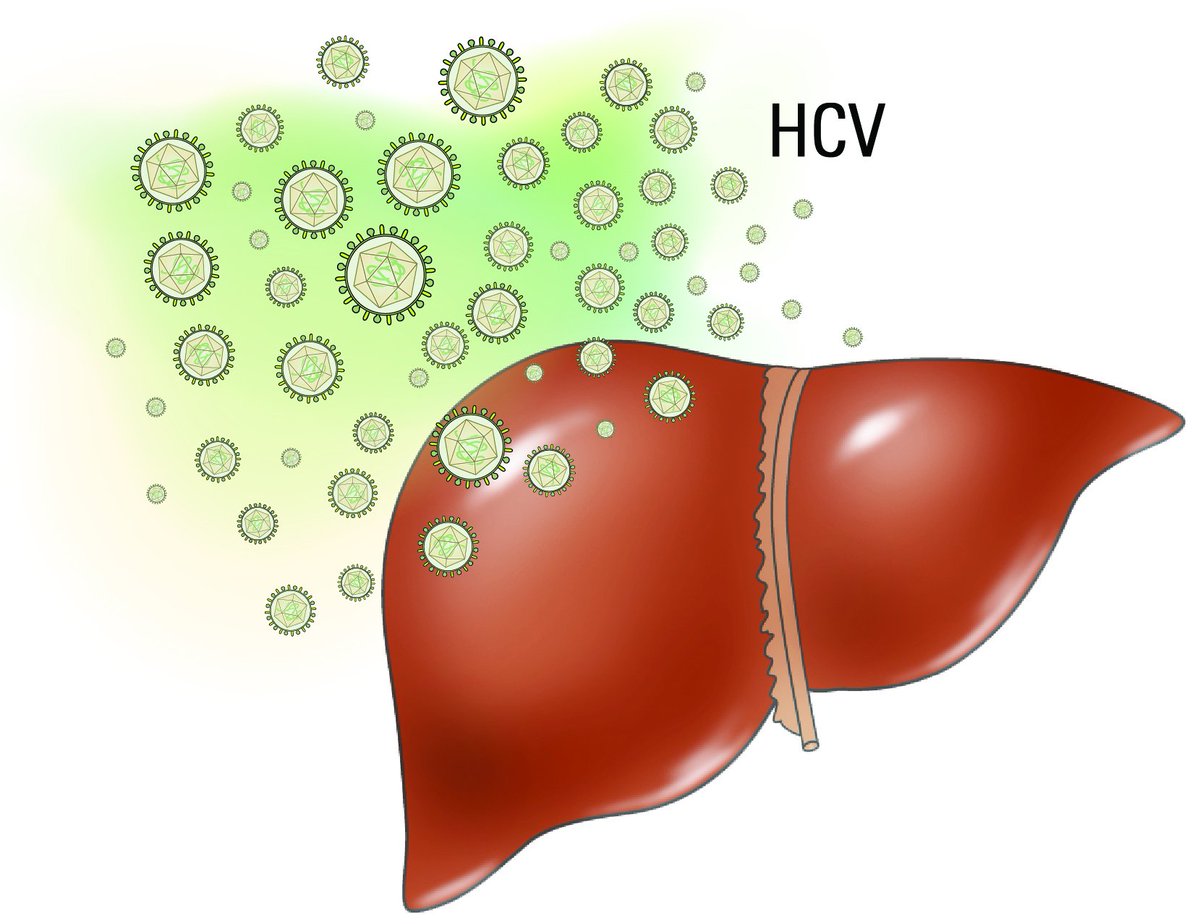
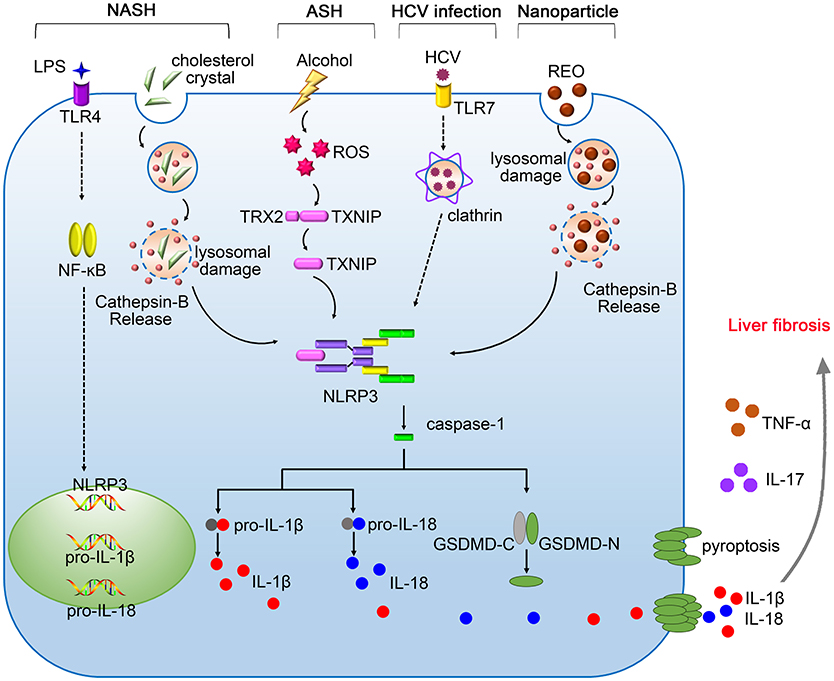 2 million people. Hepatitis C is common in 25% of HIV-positive people and 90% of HIV-positive injection drug users. It may scar the liver and is more severe in patients with HIV. No vaccine exists to prevent HCV, but it is curable with effective treatment.
2 million people. Hepatitis C is common in 25% of HIV-positive people and 90% of HIV-positive injection drug users. It may scar the liver and is more severe in patients with HIV. No vaccine exists to prevent HCV, but it is curable with effective treatment.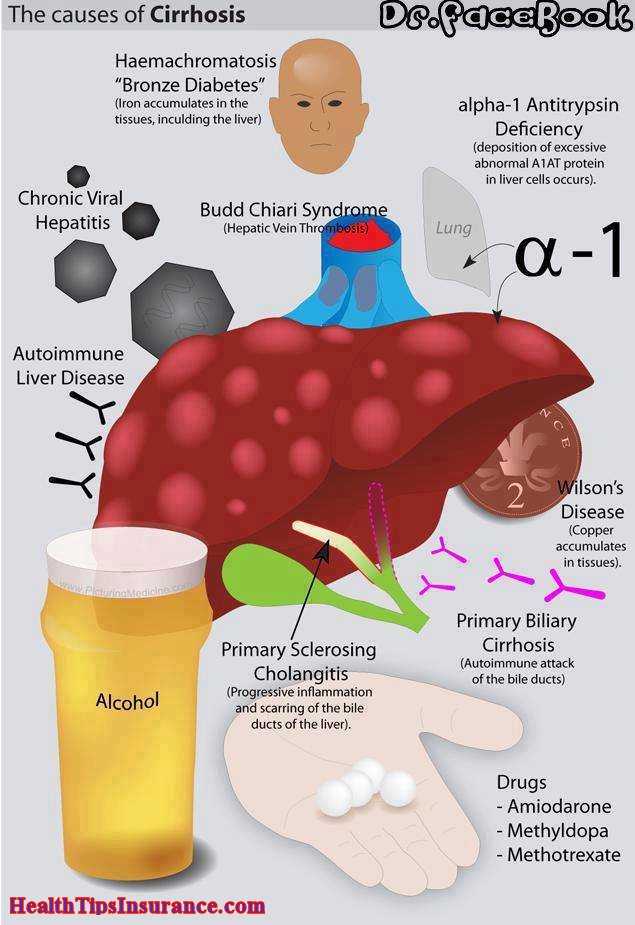
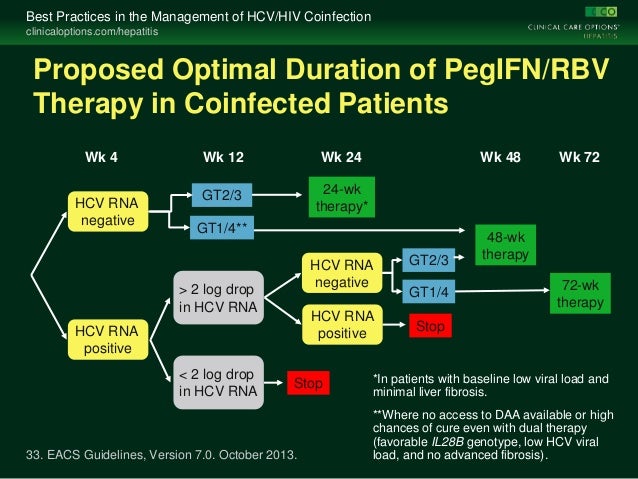 The Centers for Disease Control and Prevention (CDC) recommends a one-time screening for all baby boomers.
The Centers for Disease Control and Prevention (CDC) recommends a one-time screening for all baby boomers.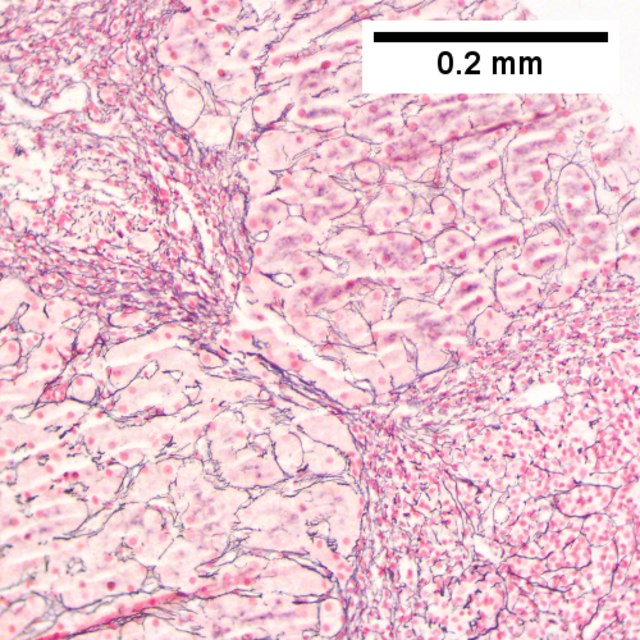
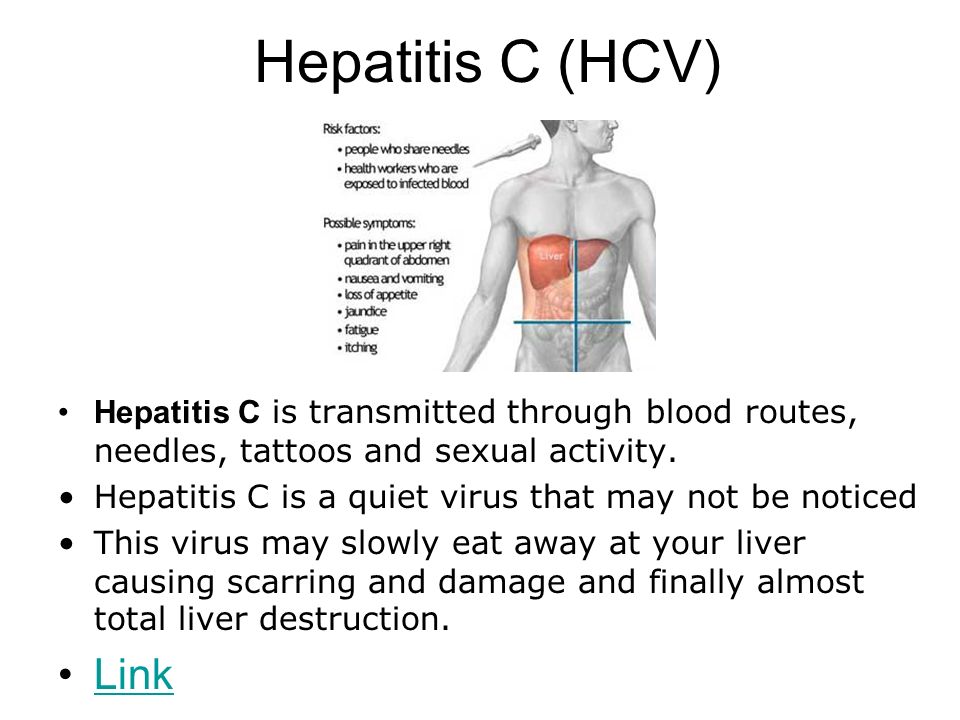 It is the cause of diseases such as chickenpox and shingles.
It is the cause of diseases such as chickenpox and shingles.